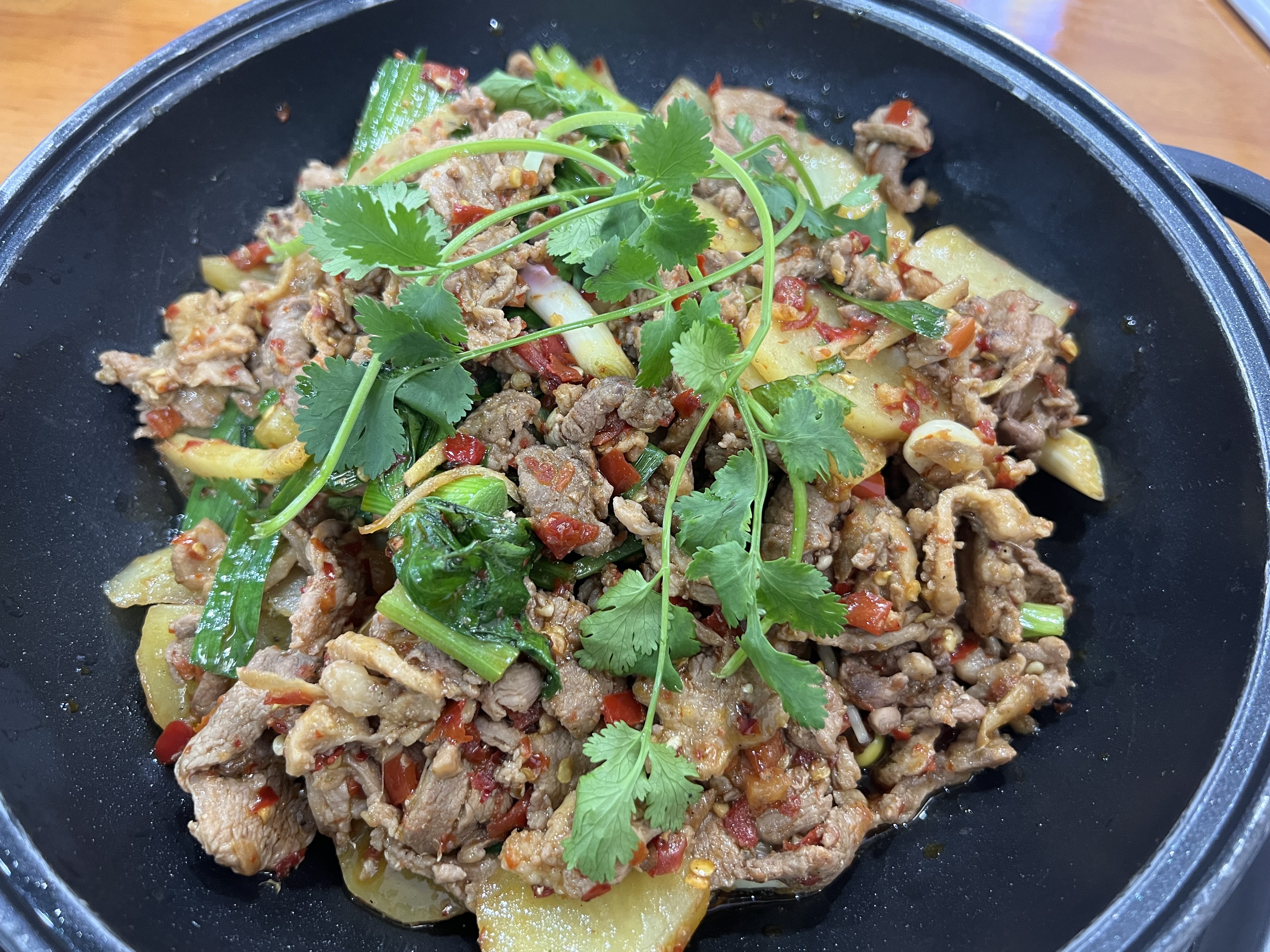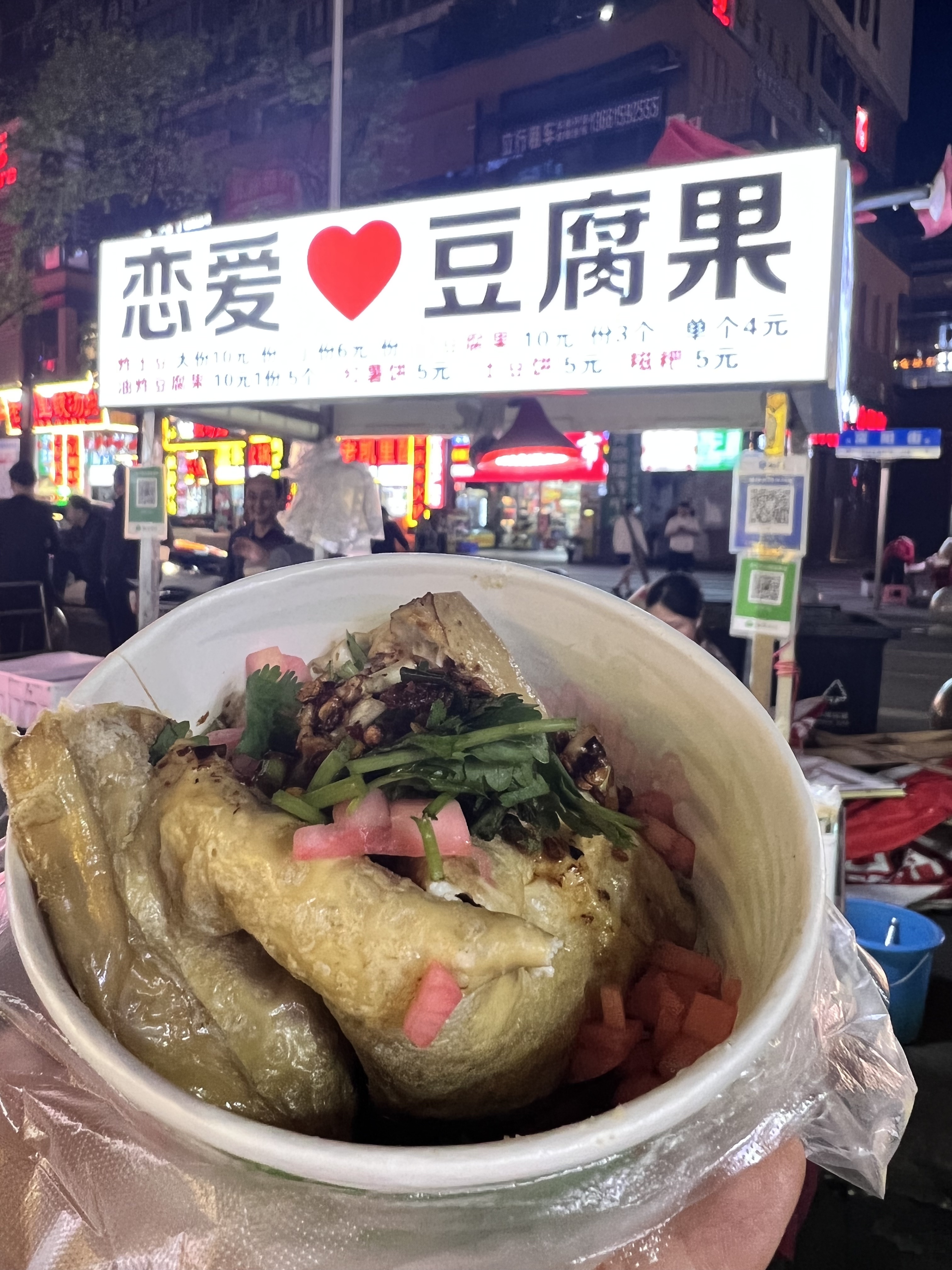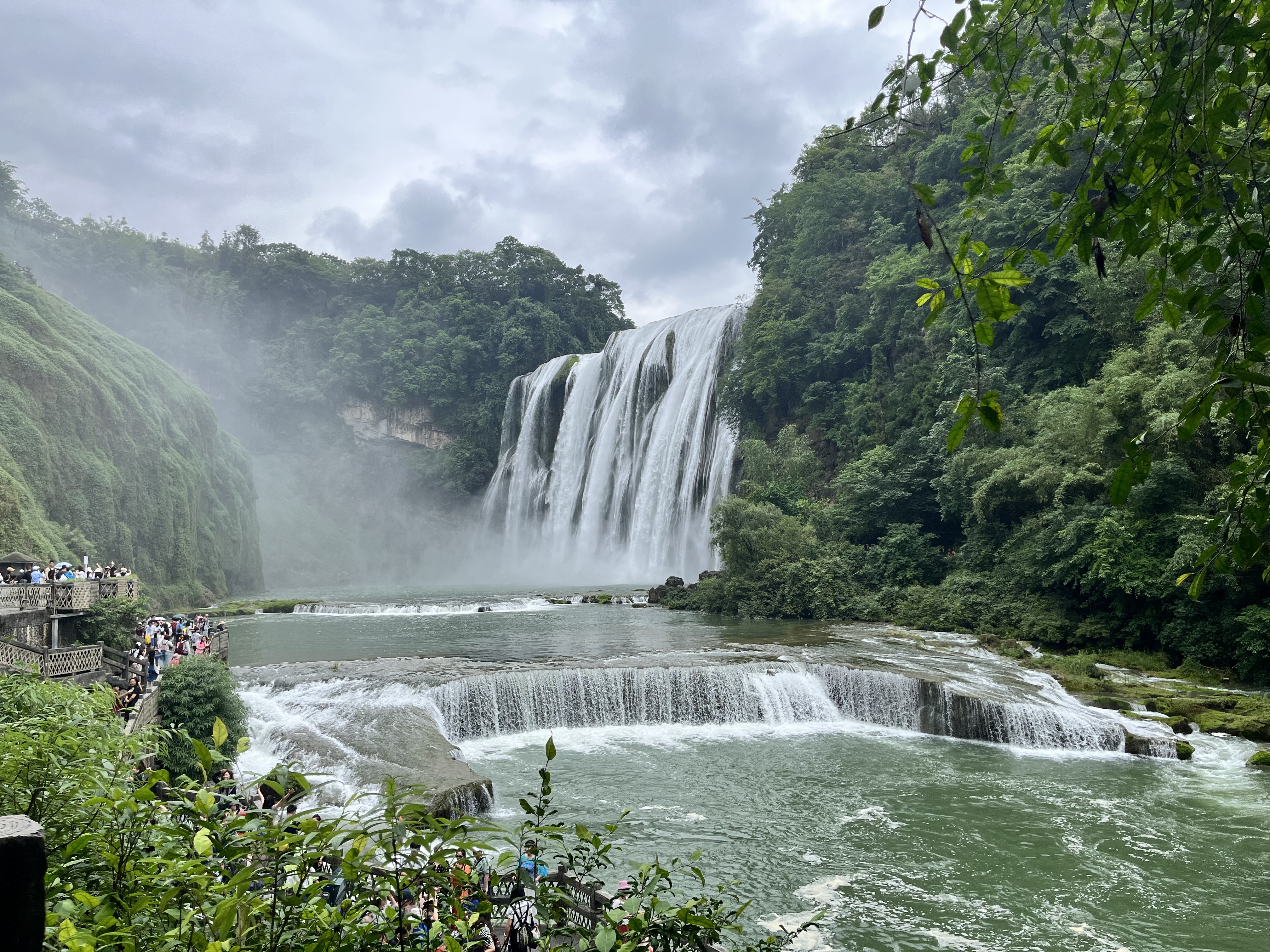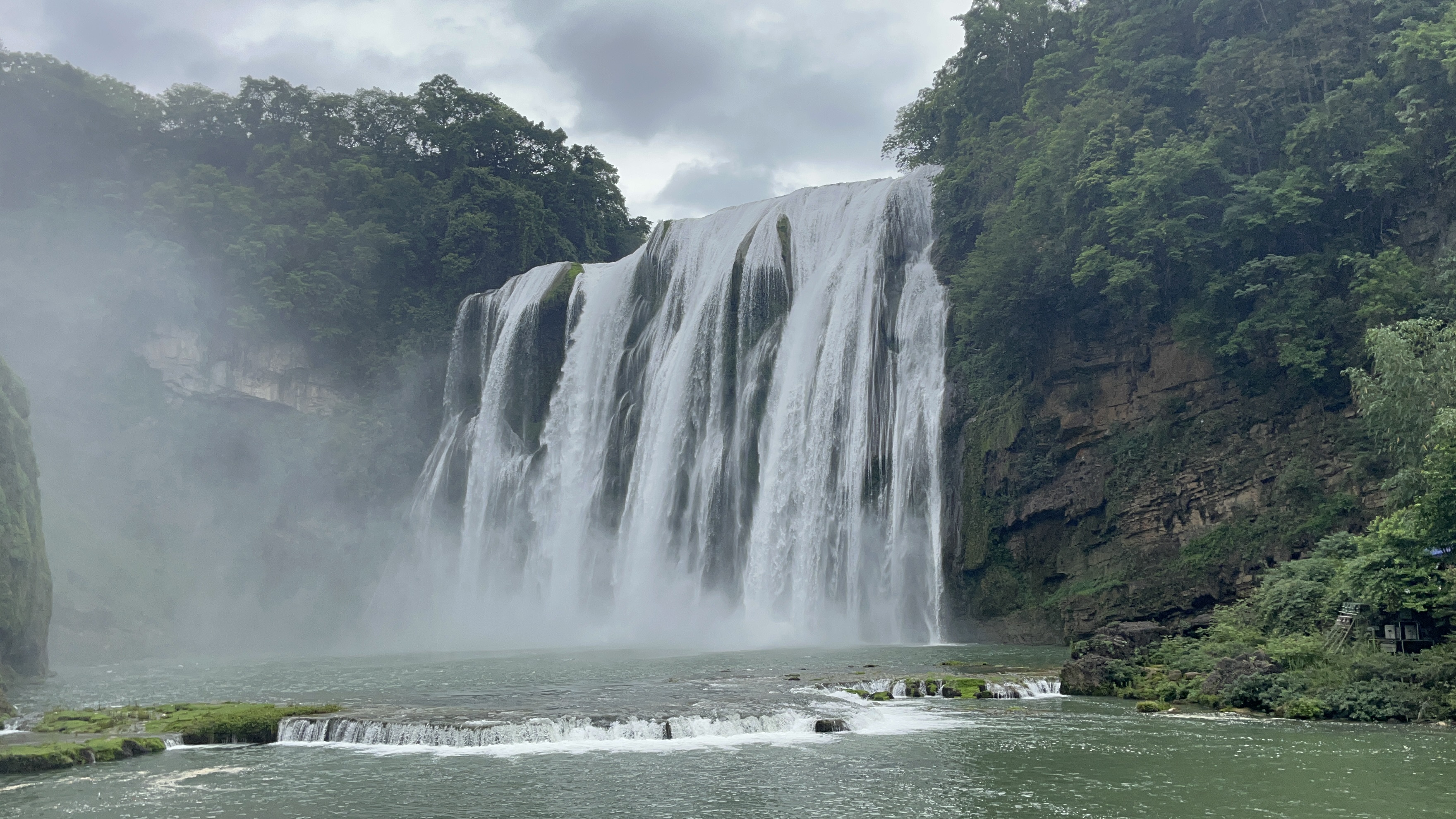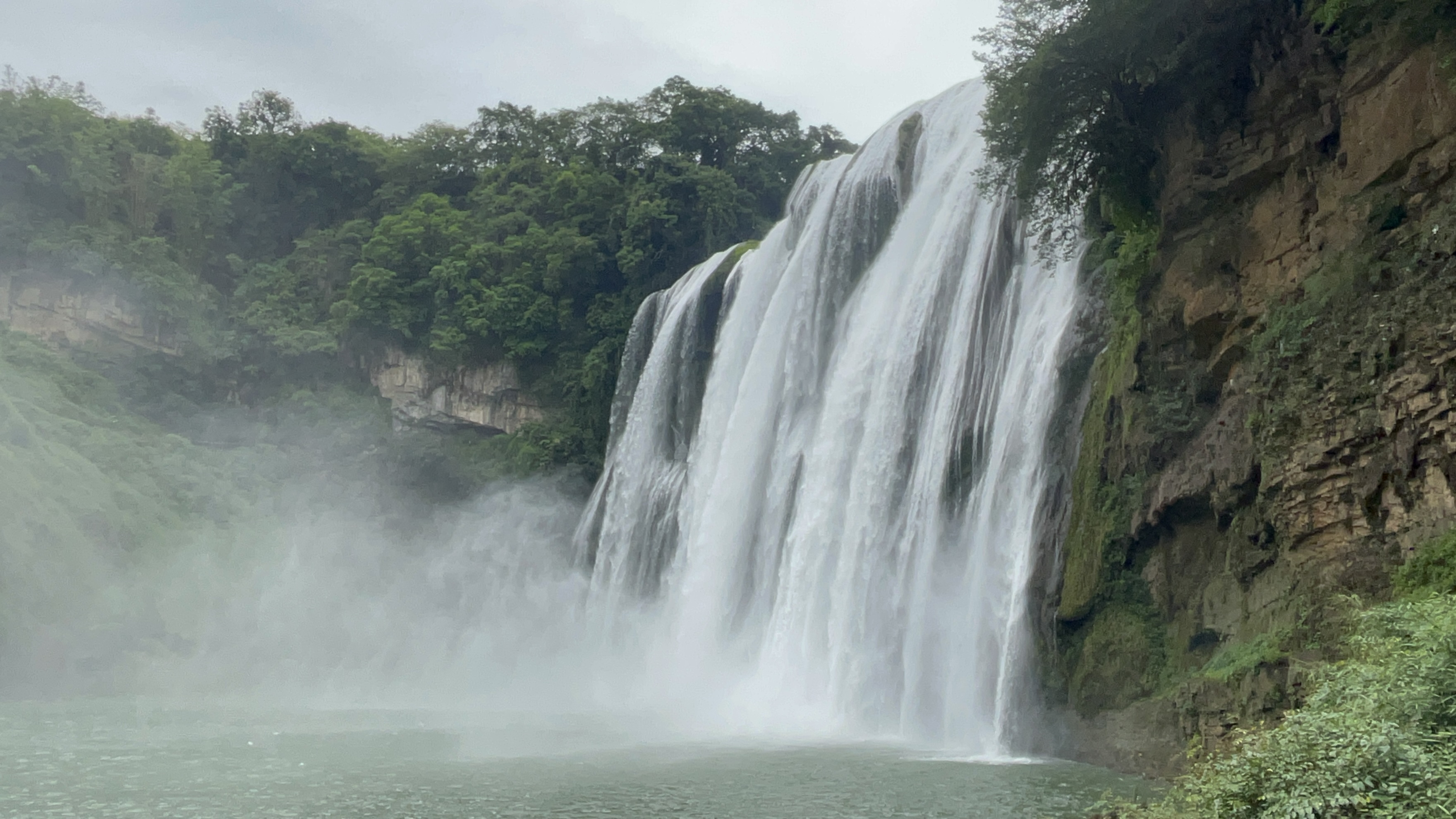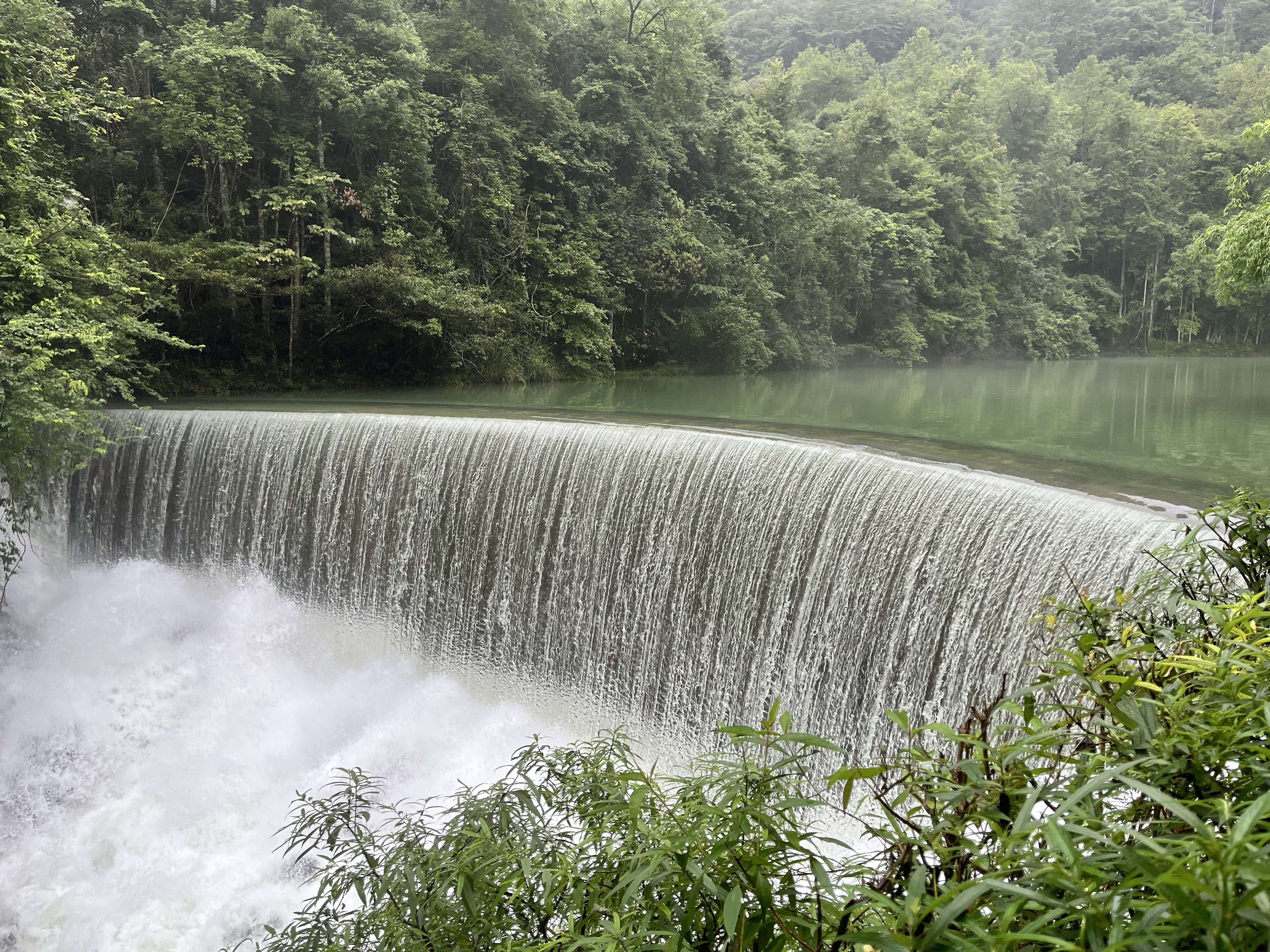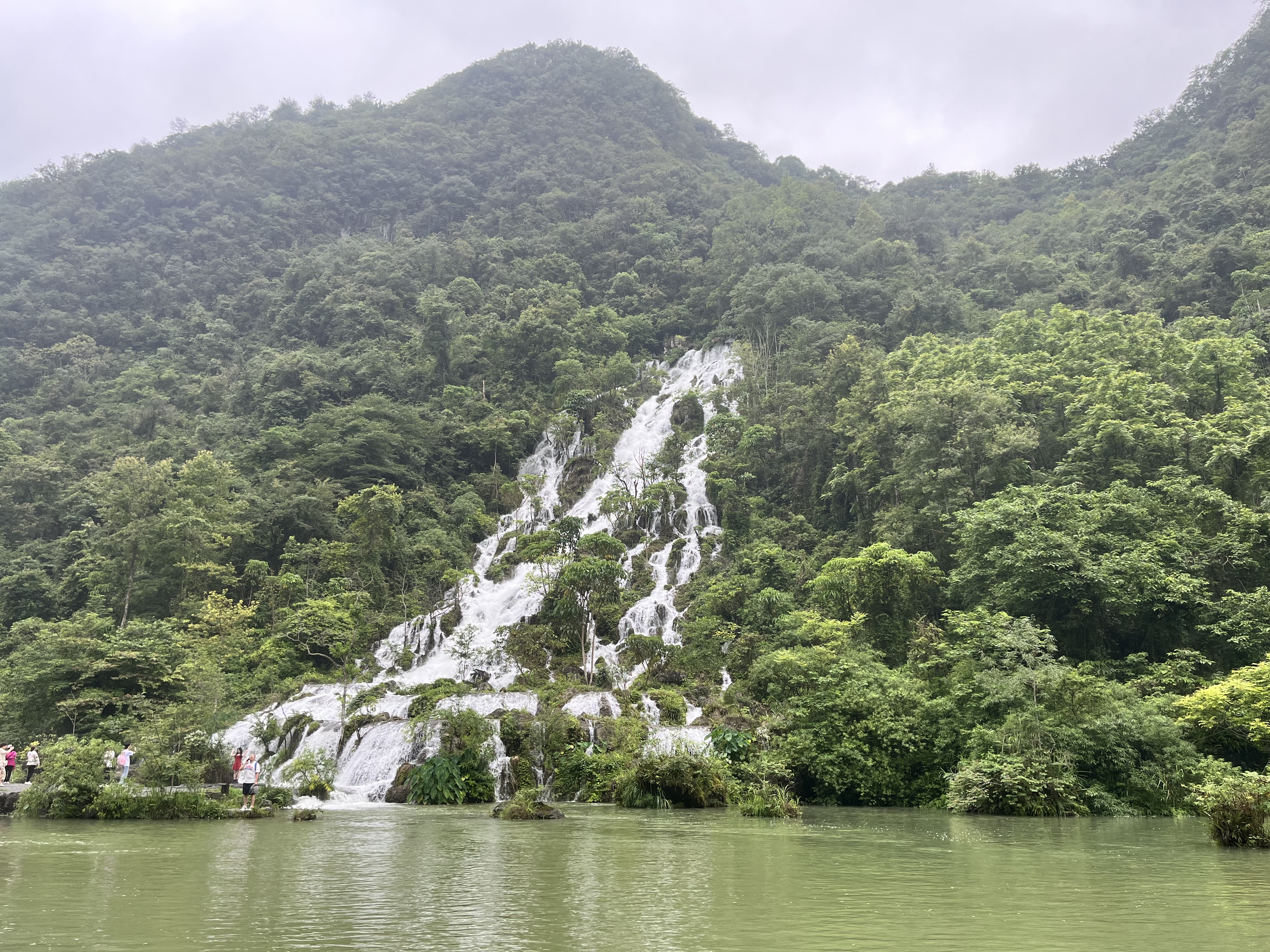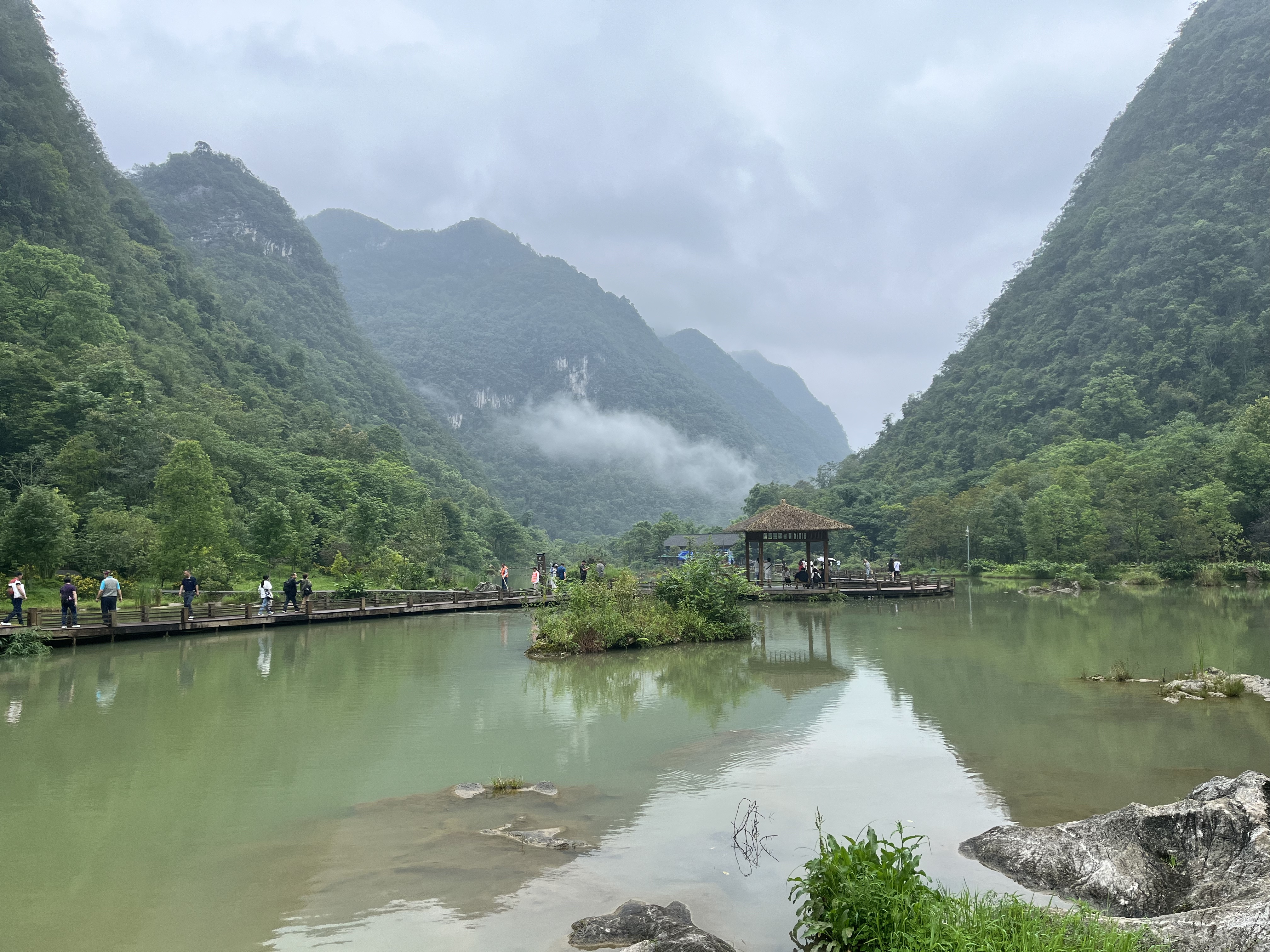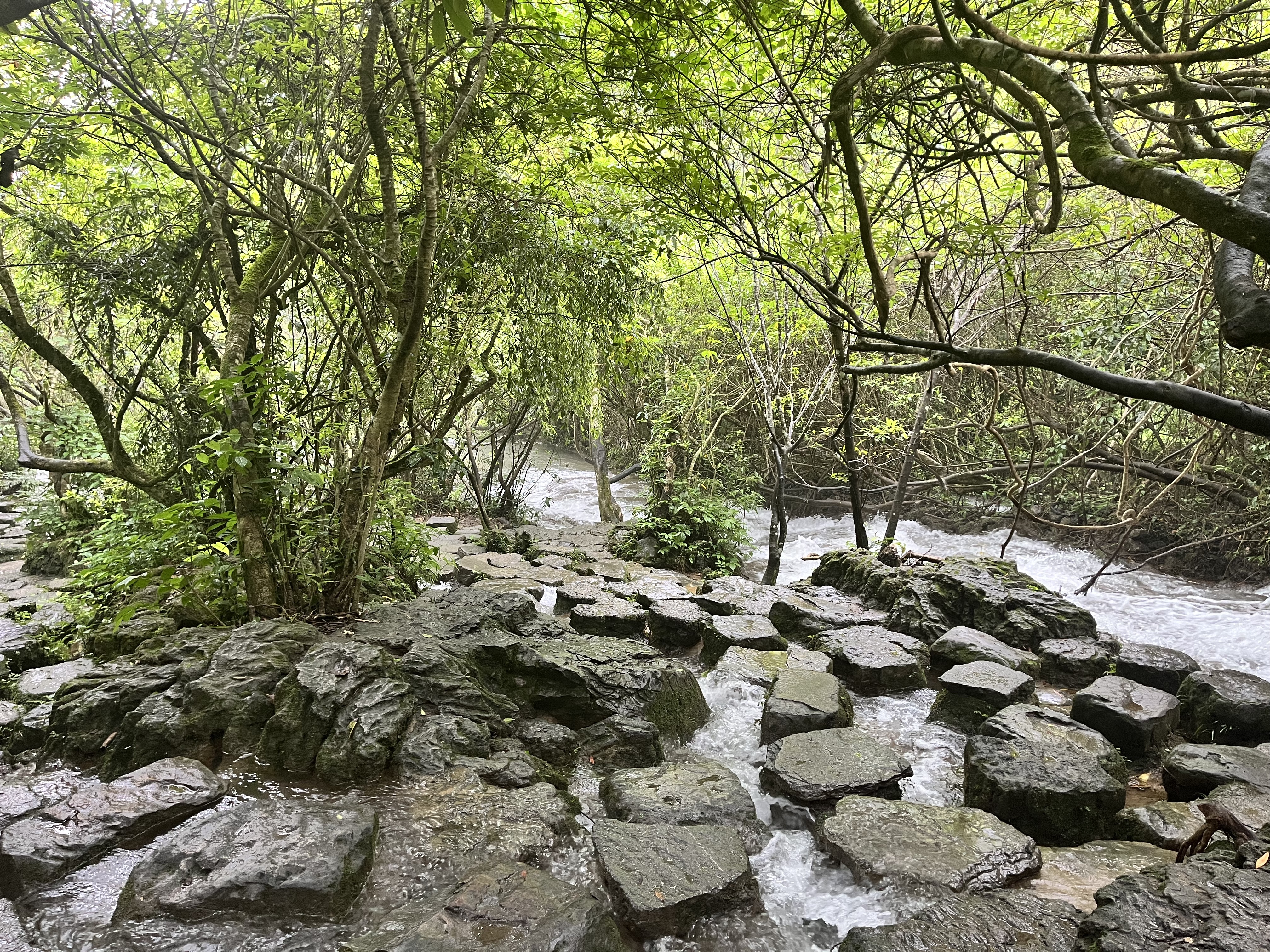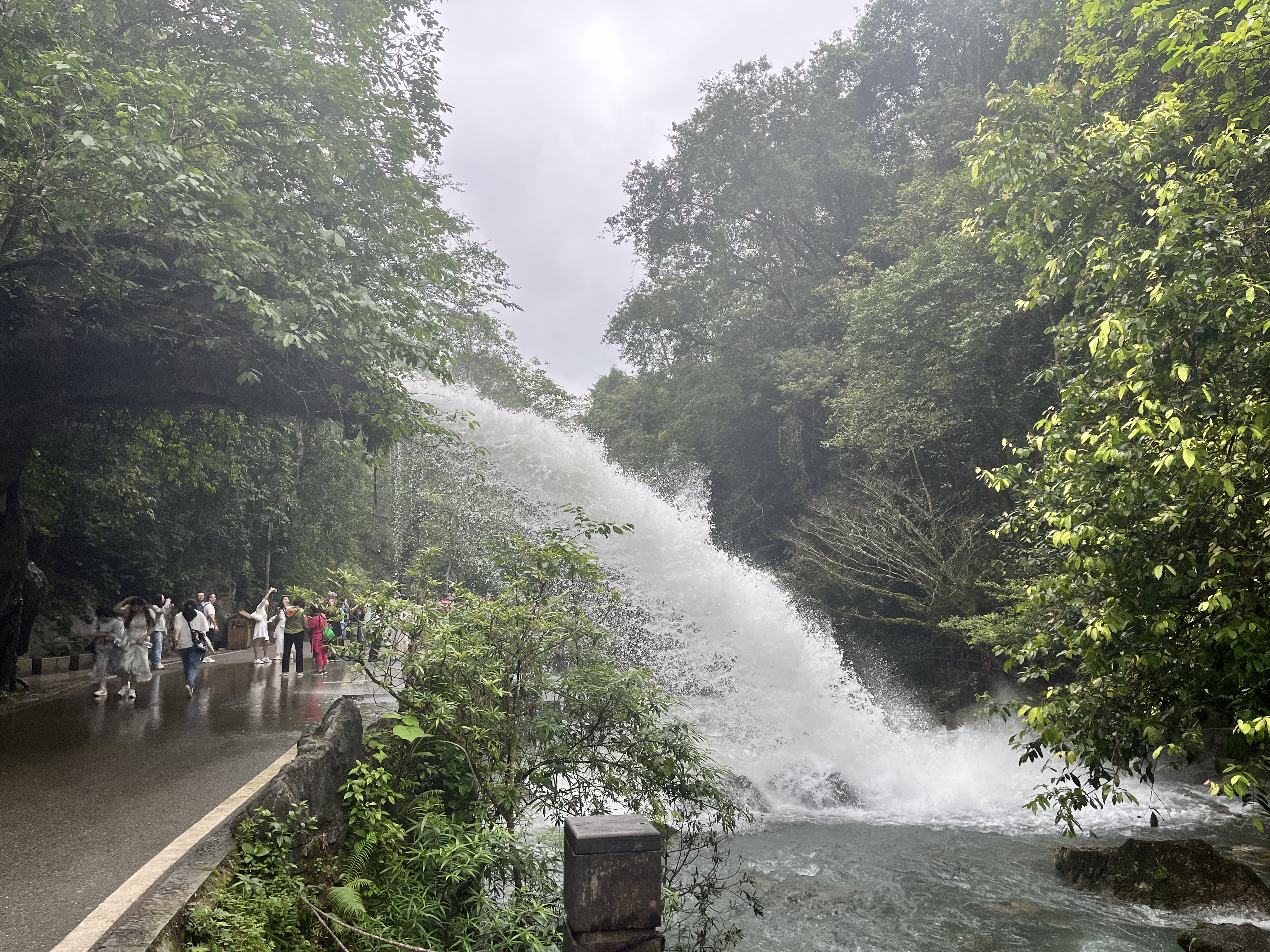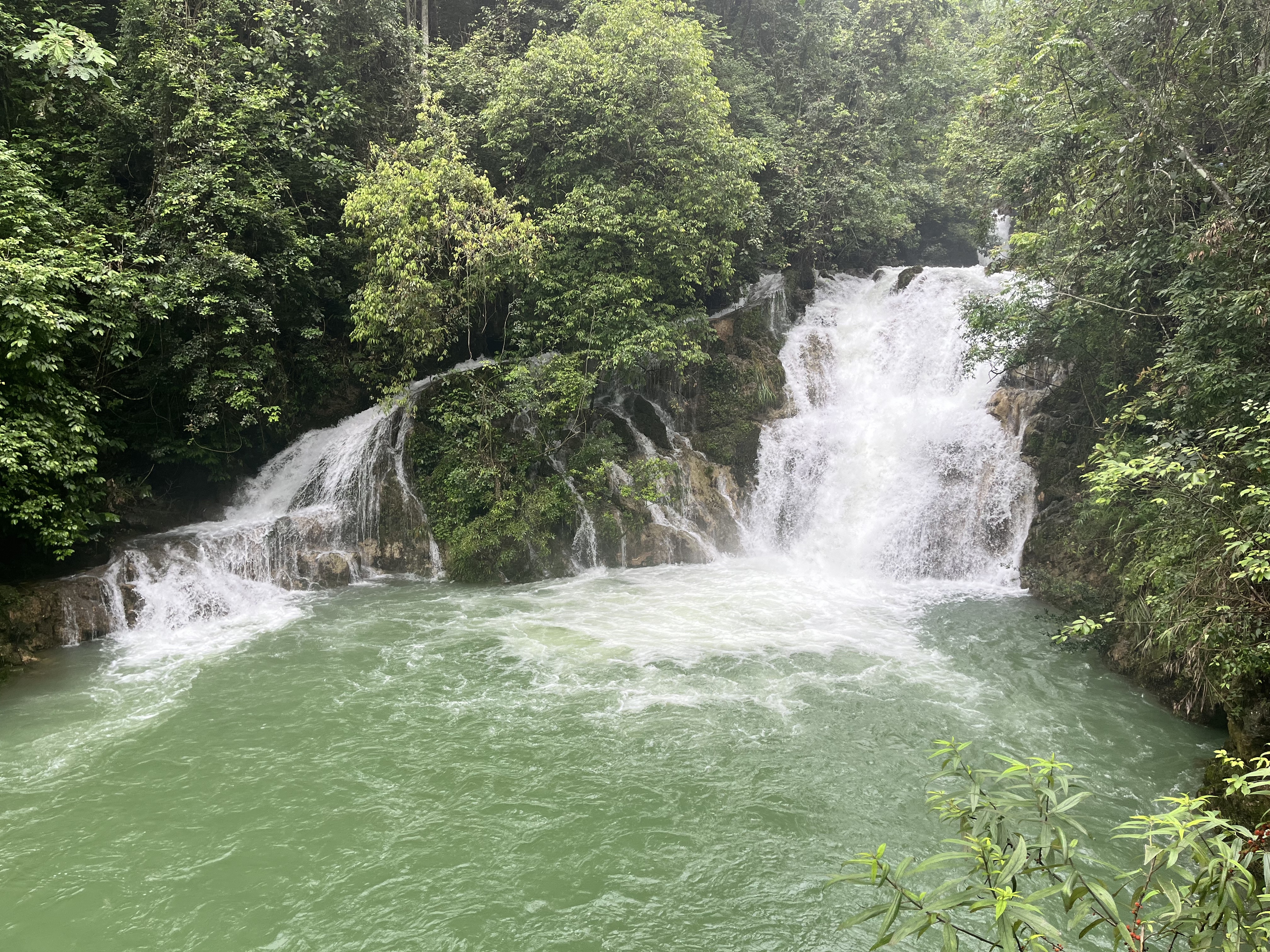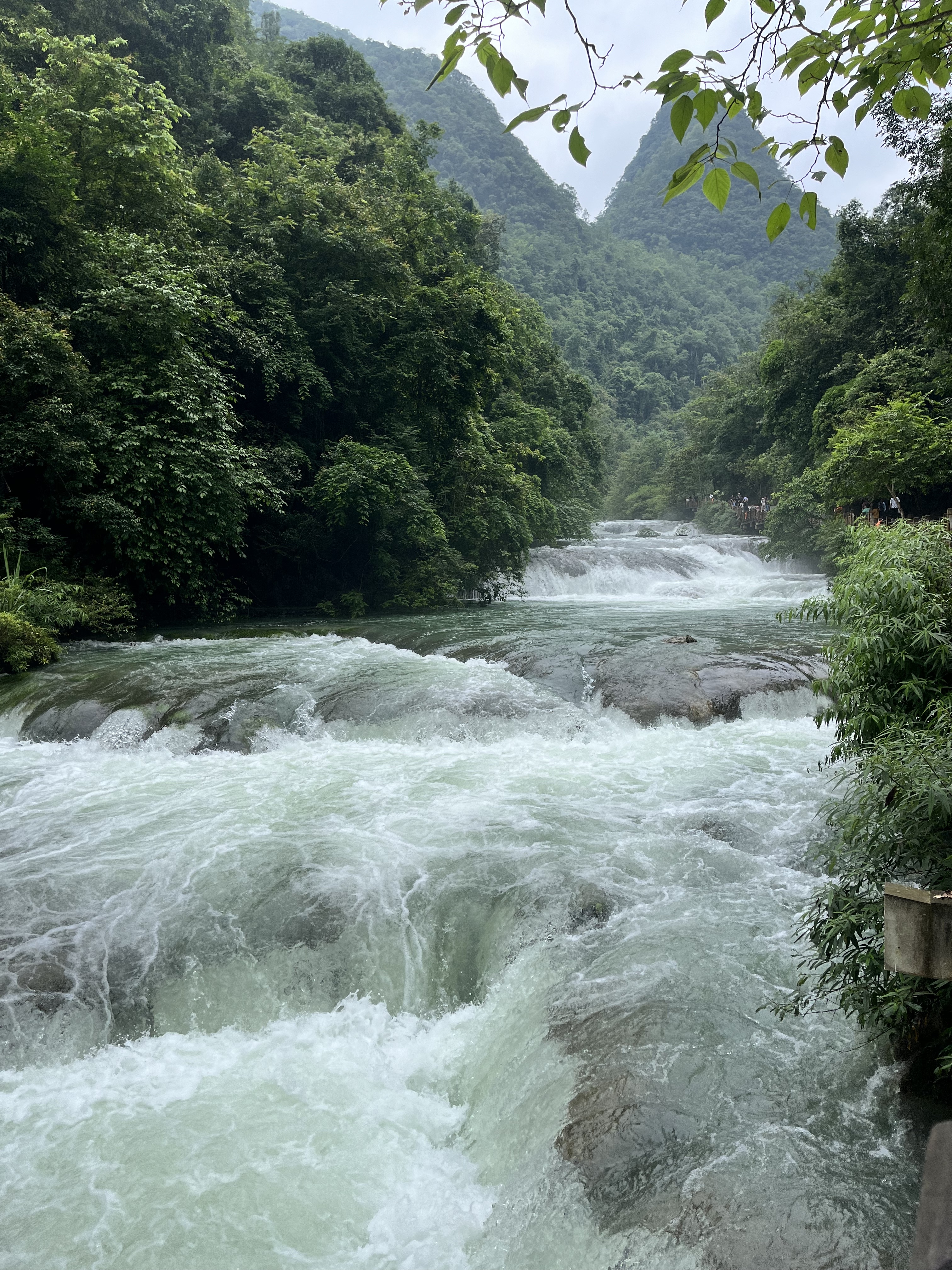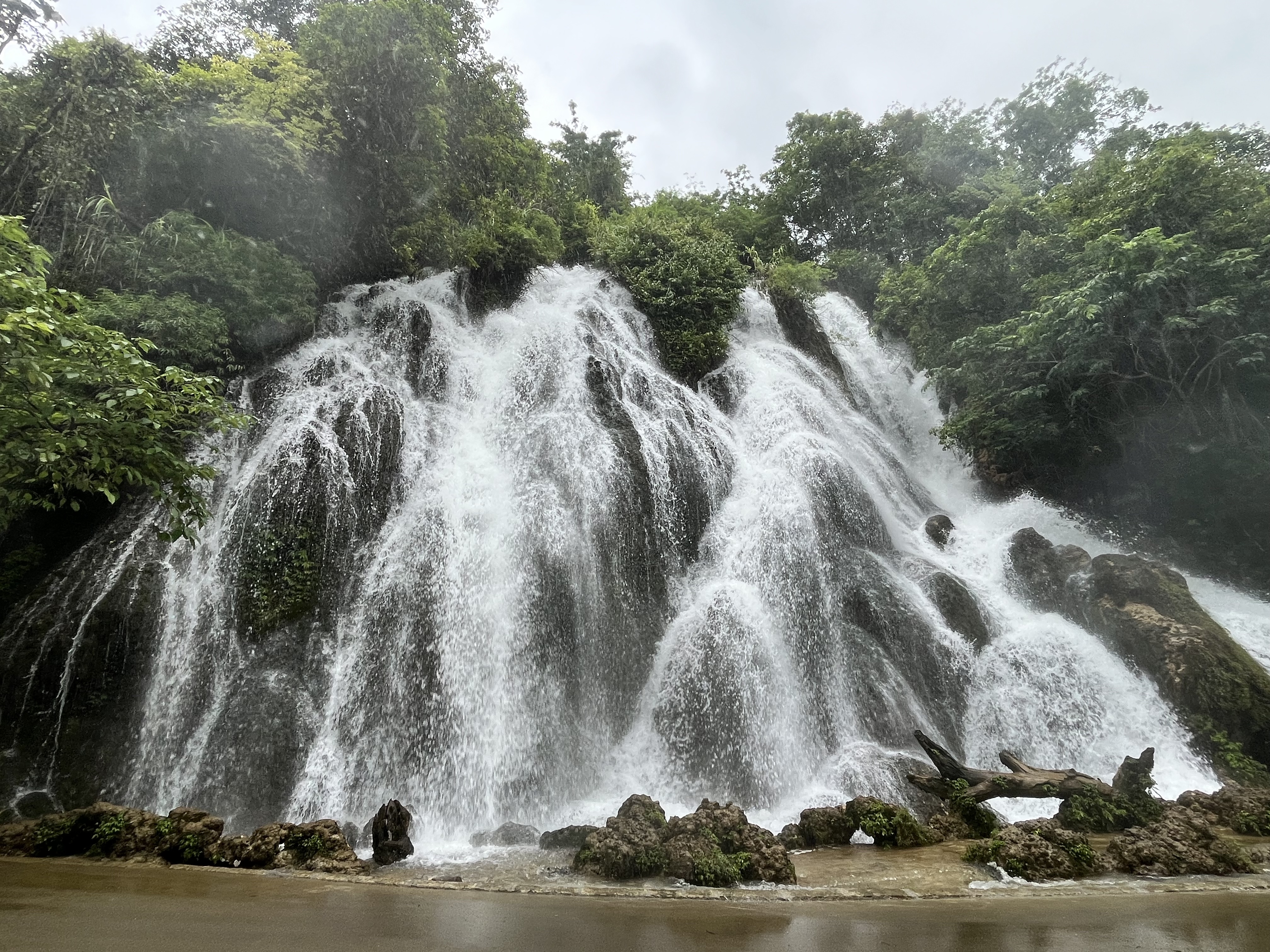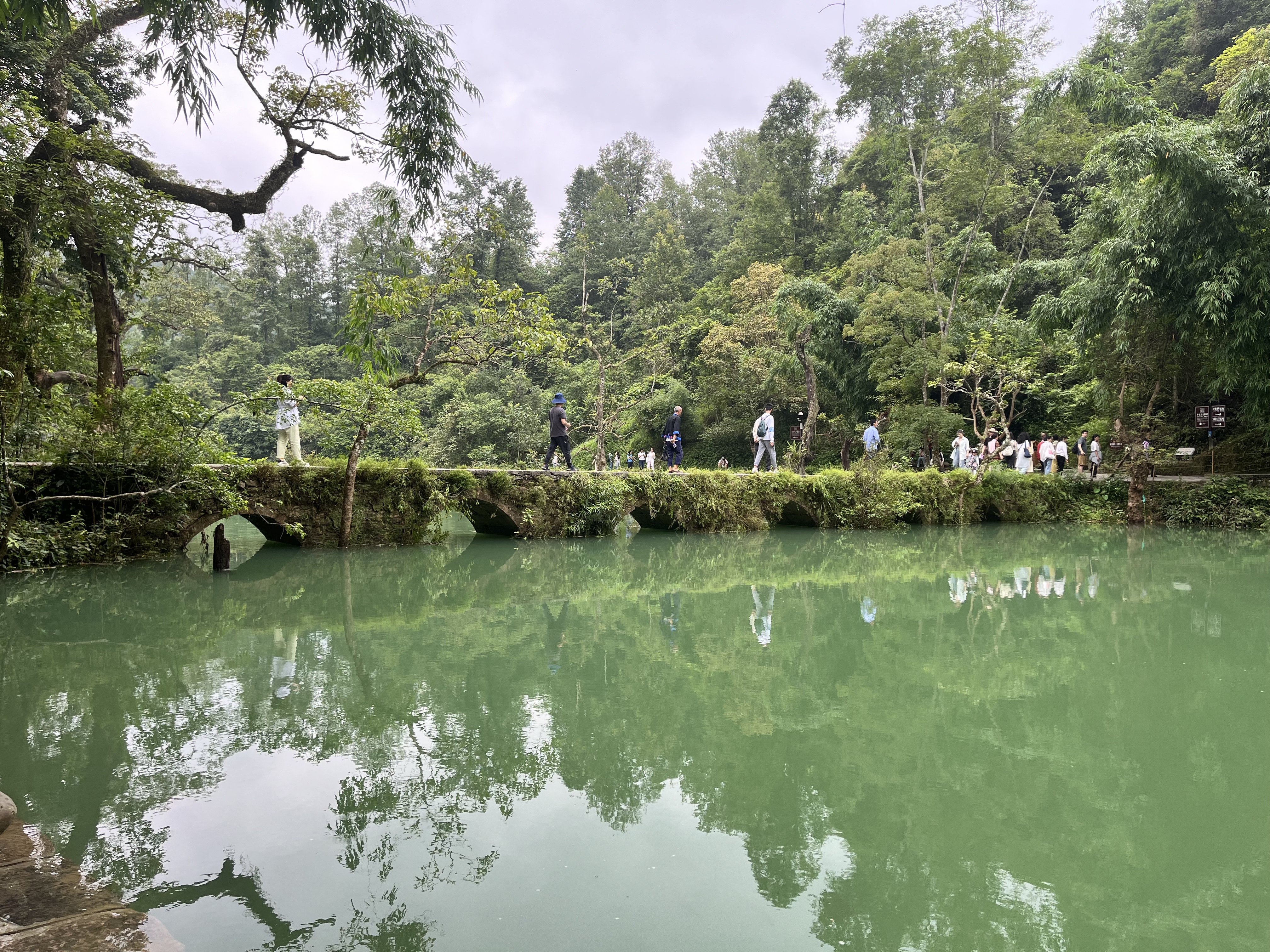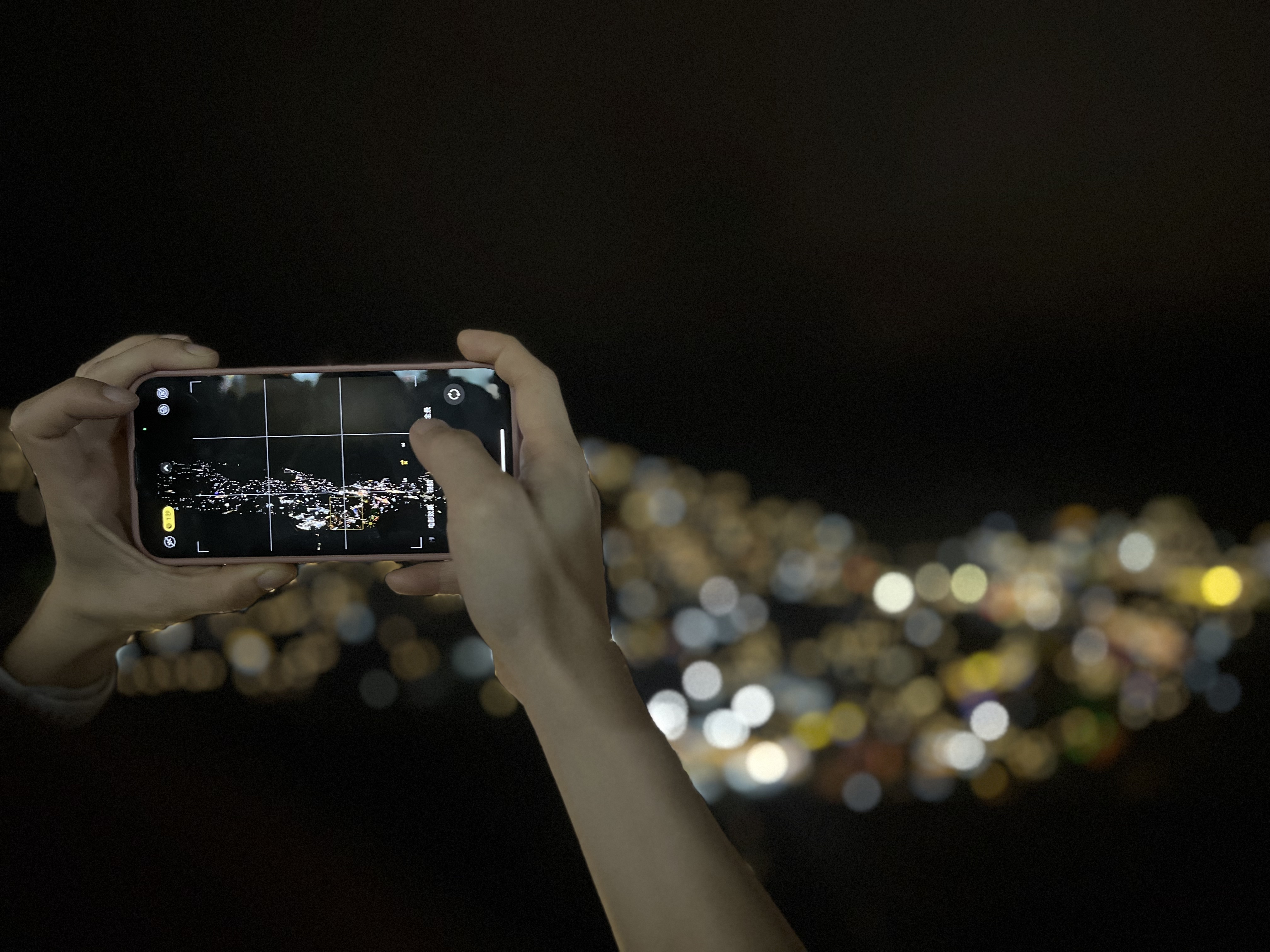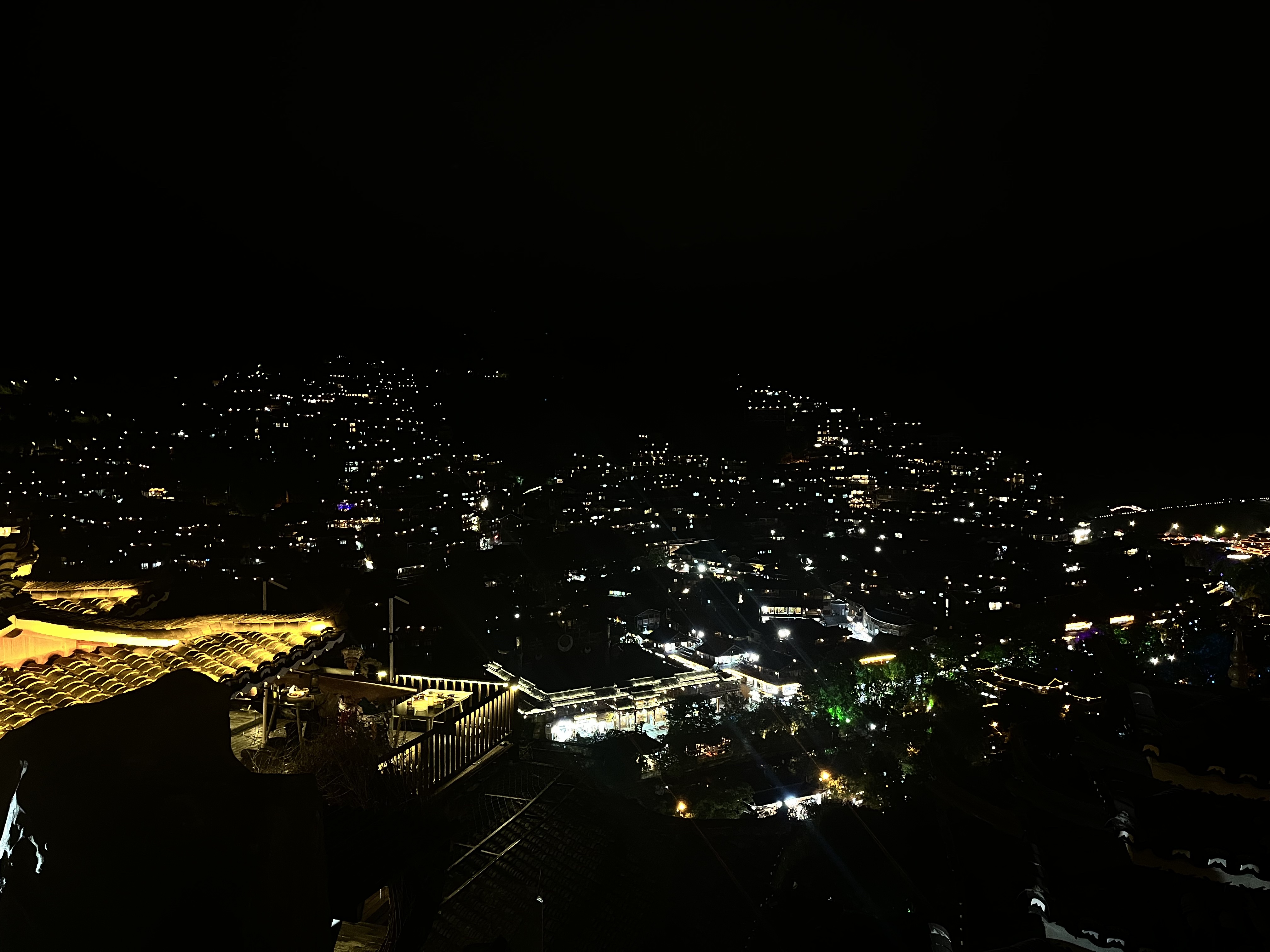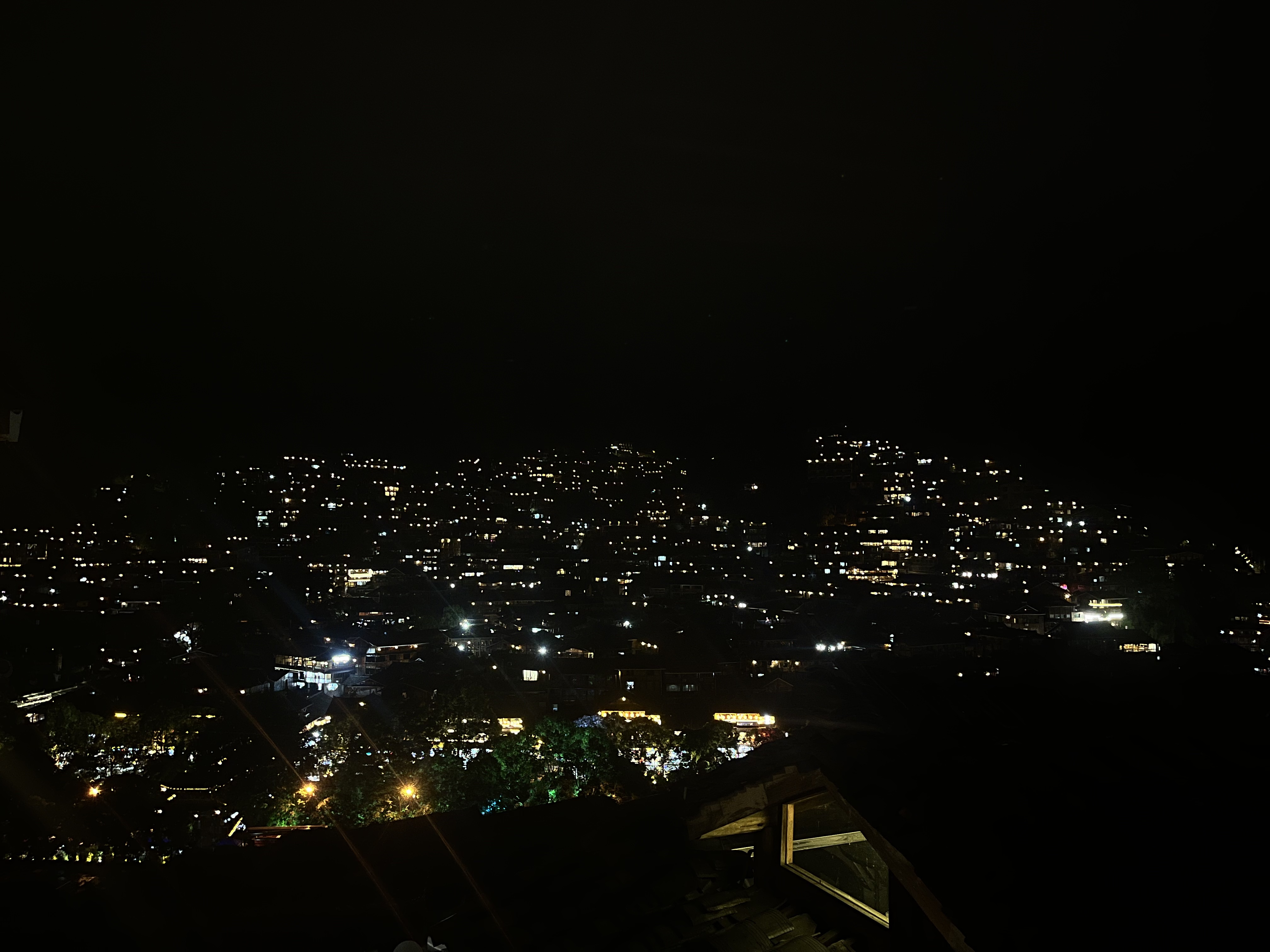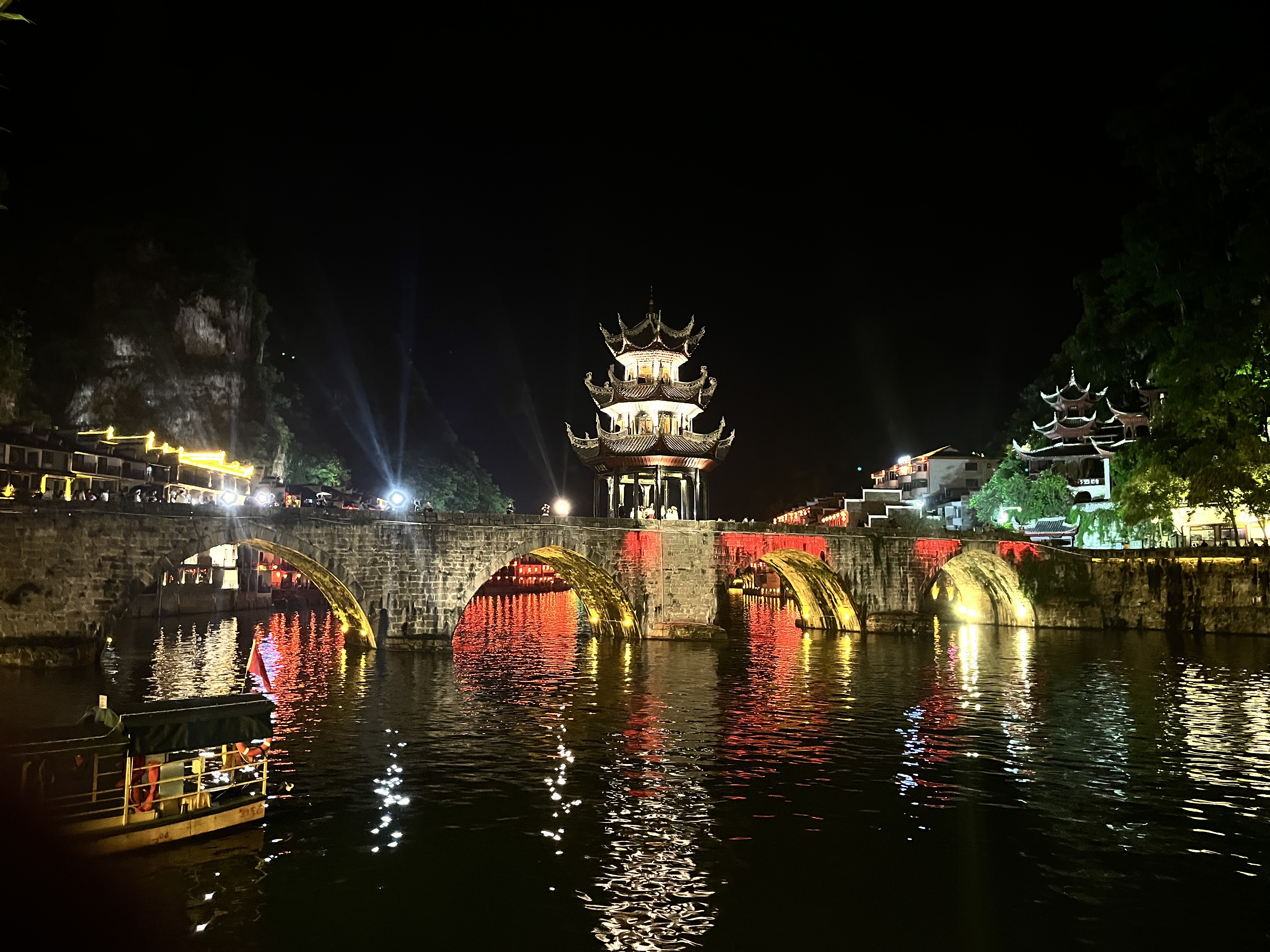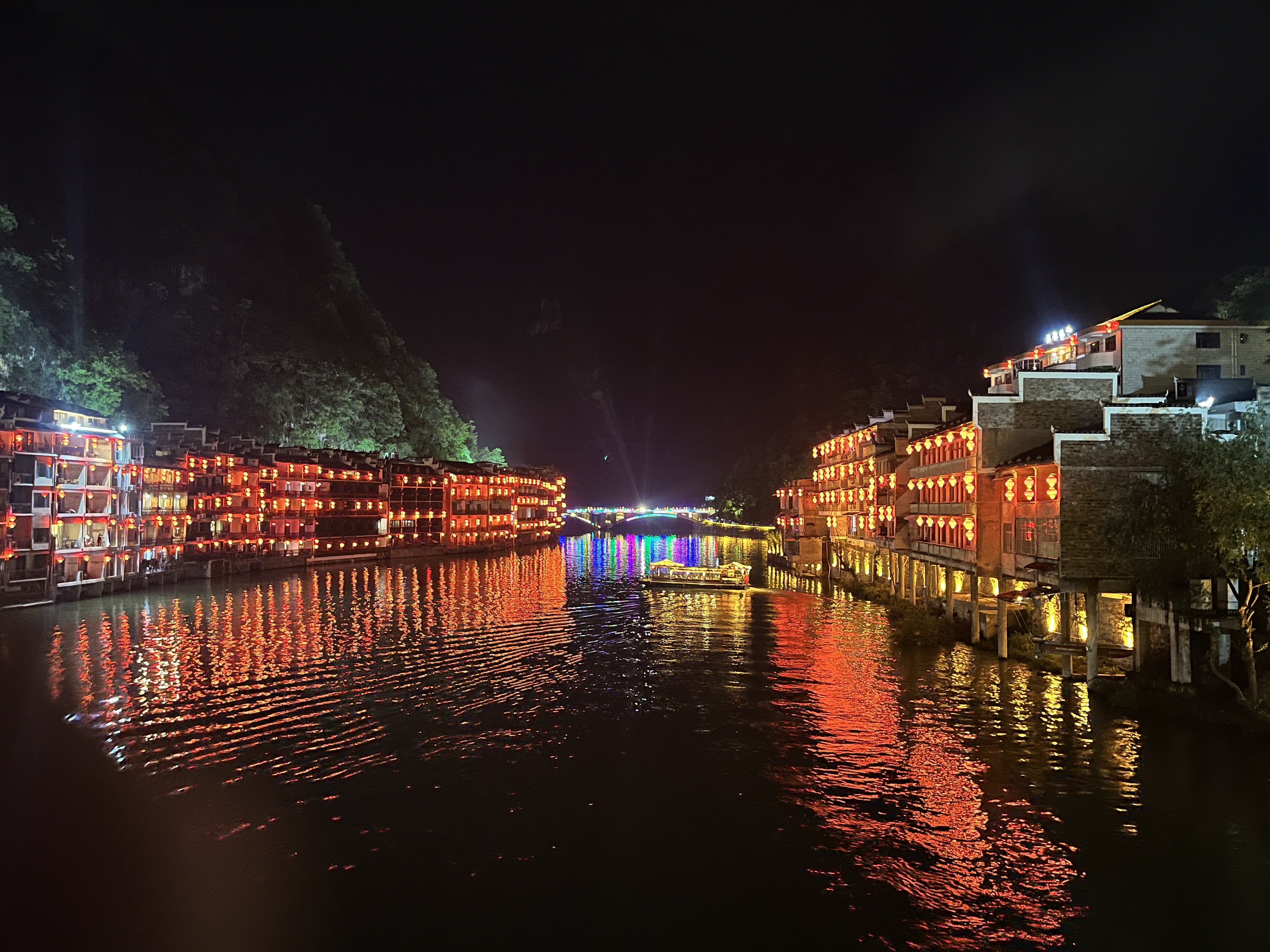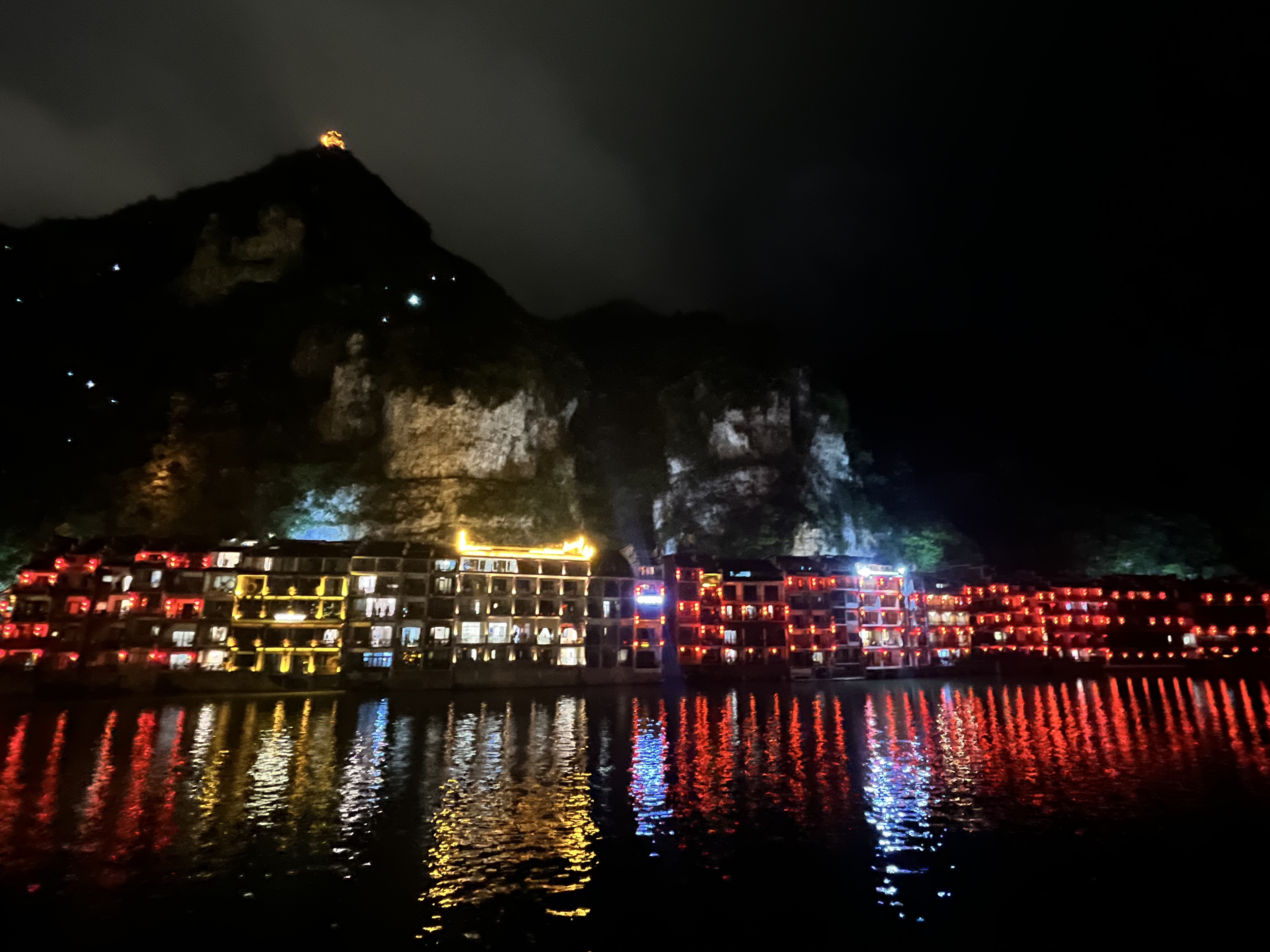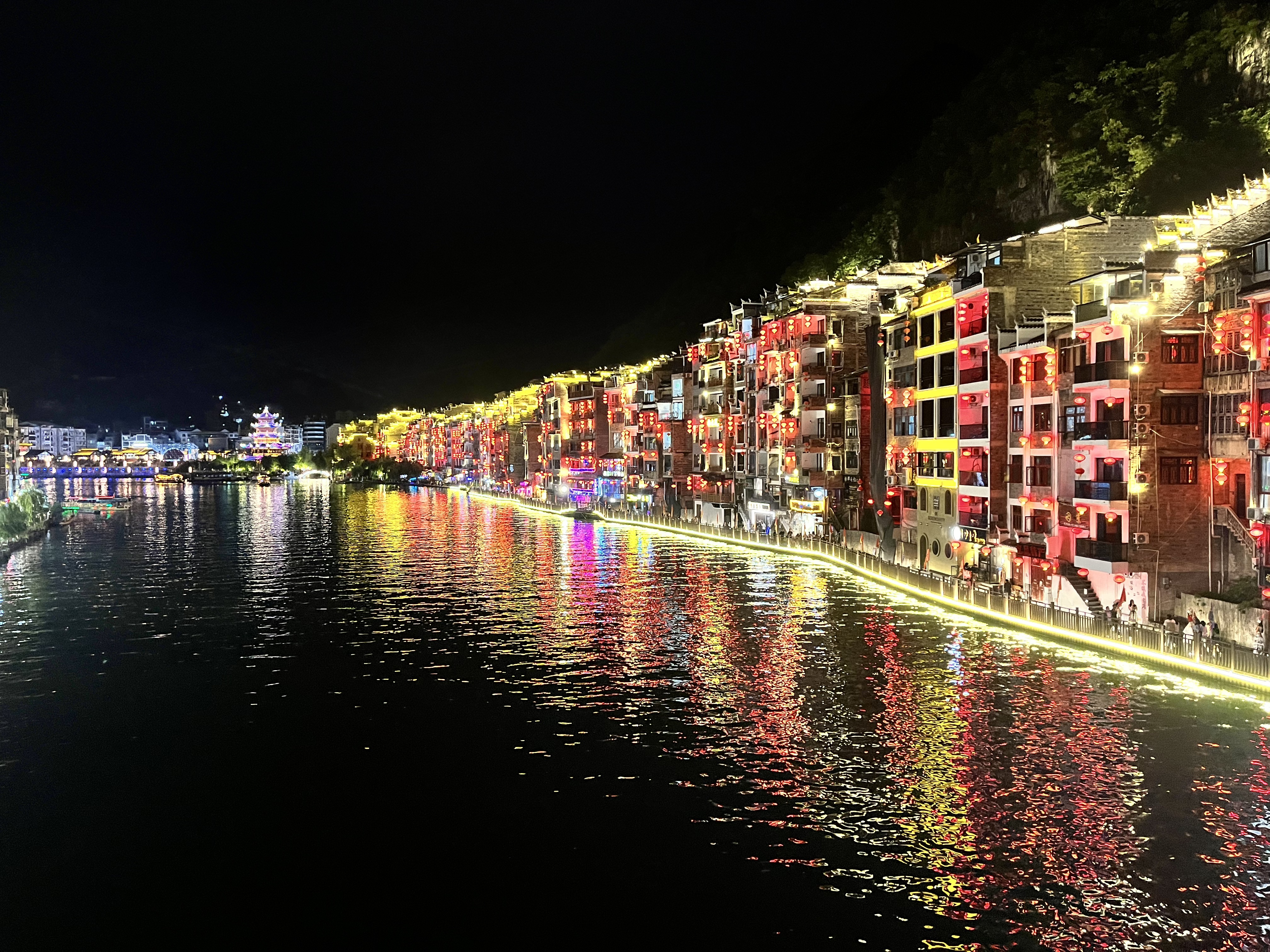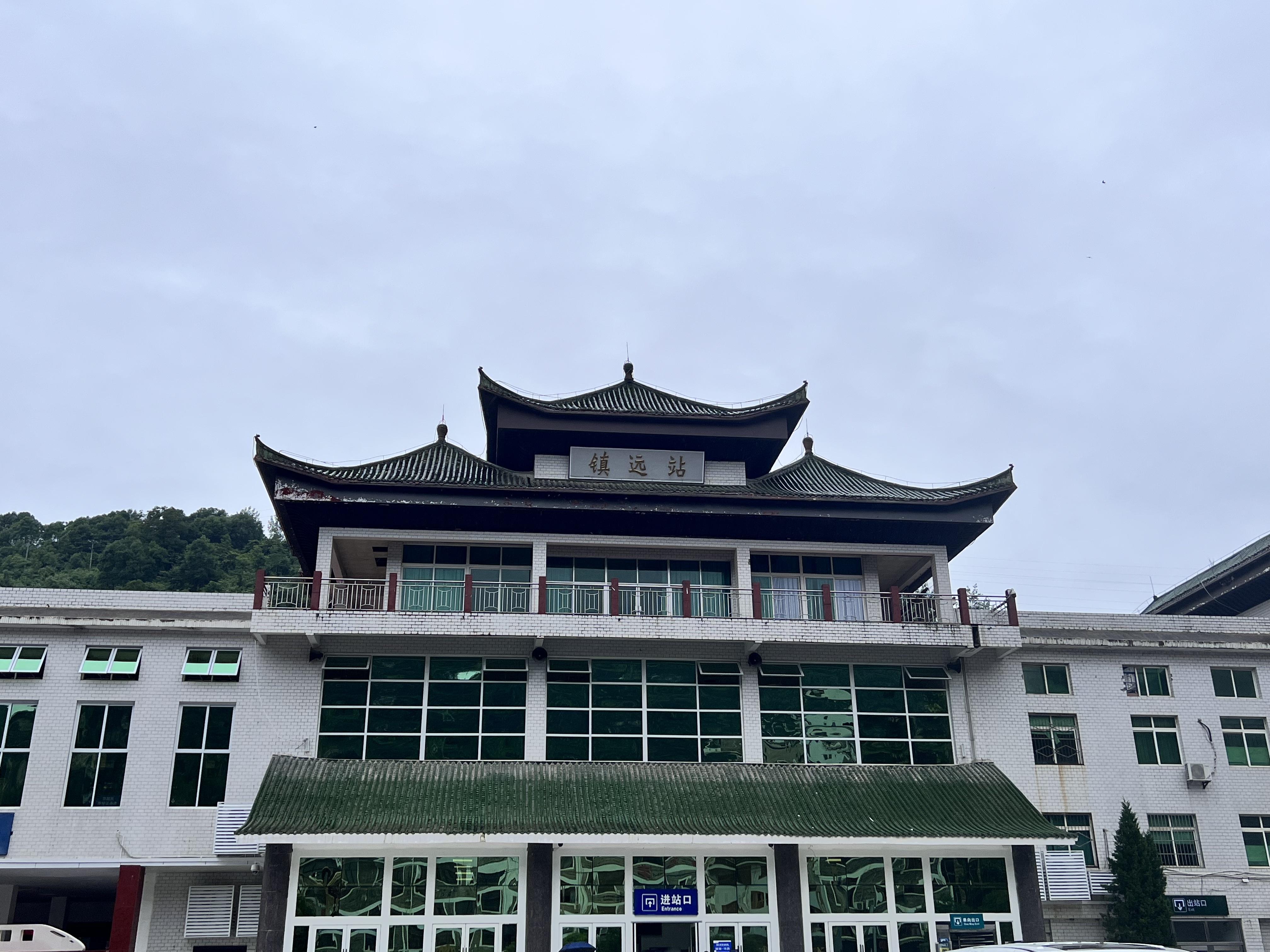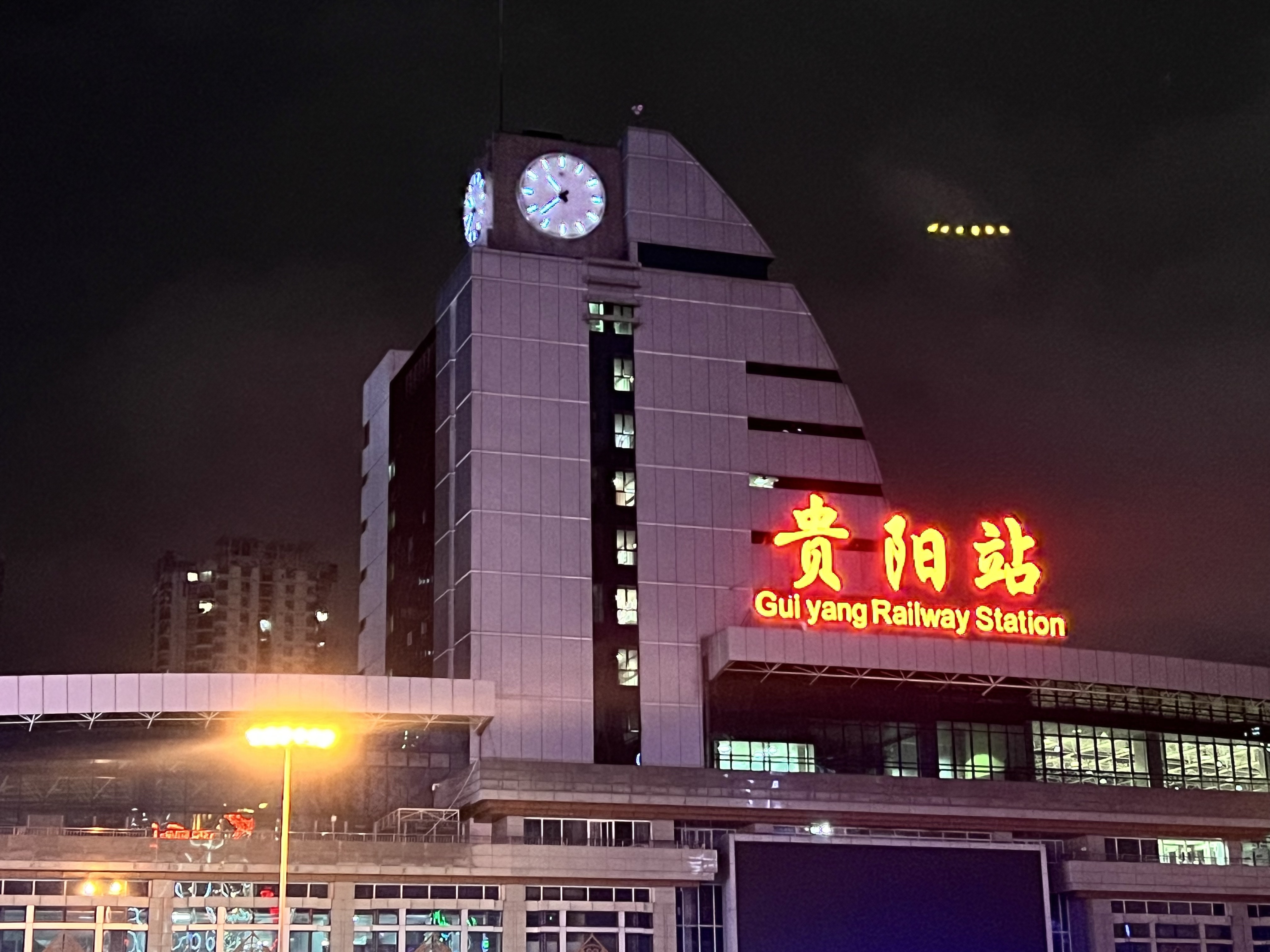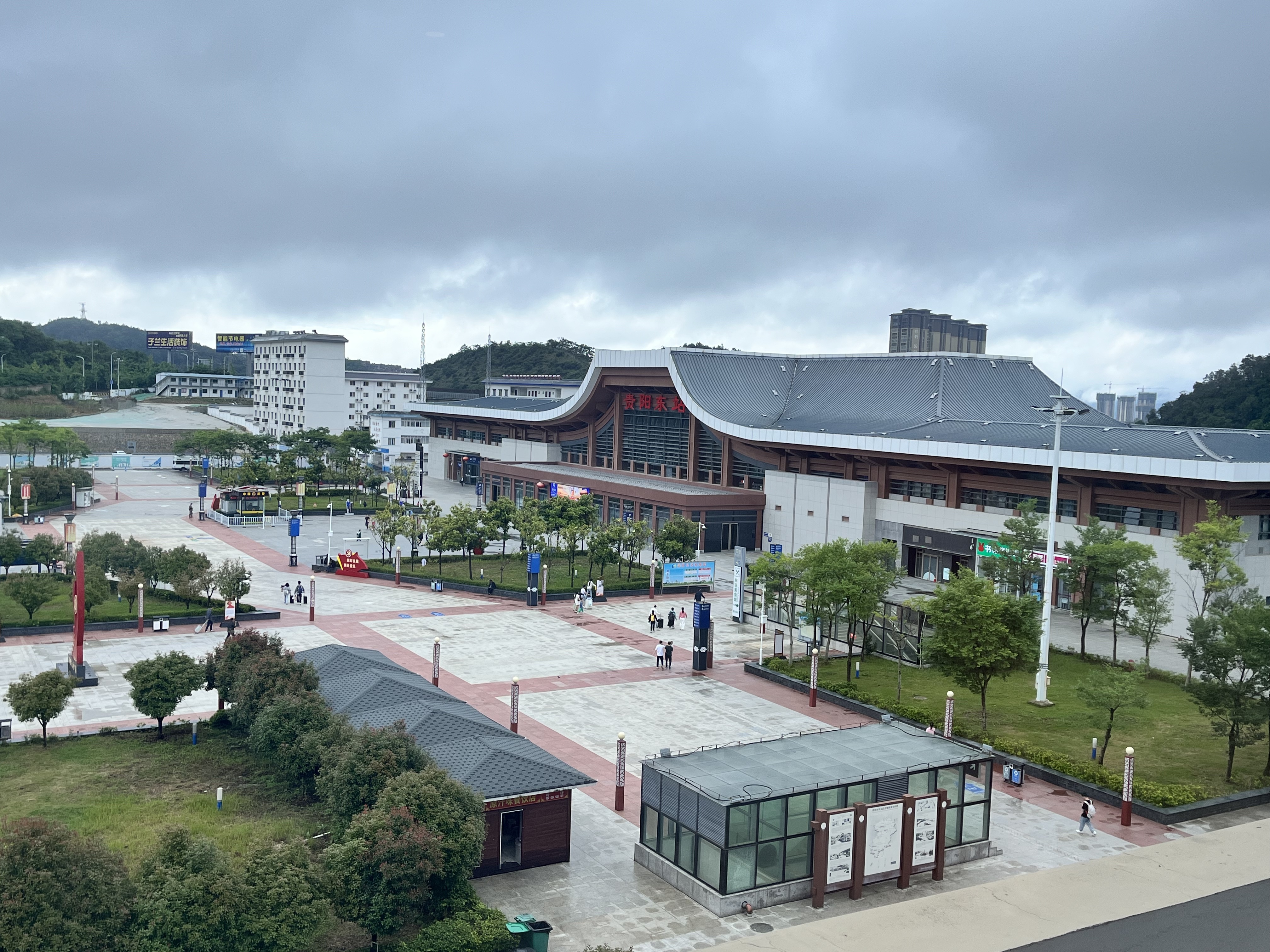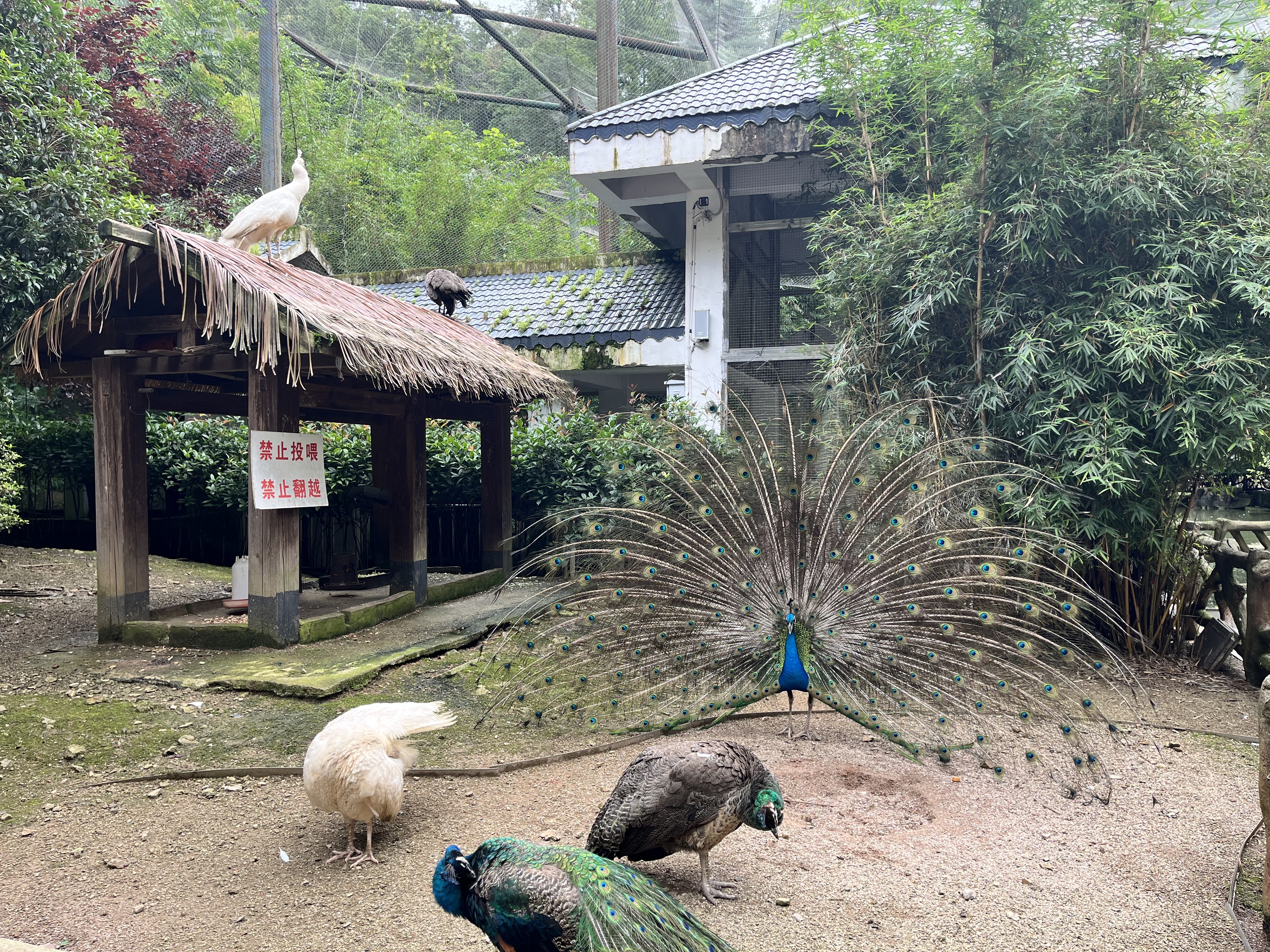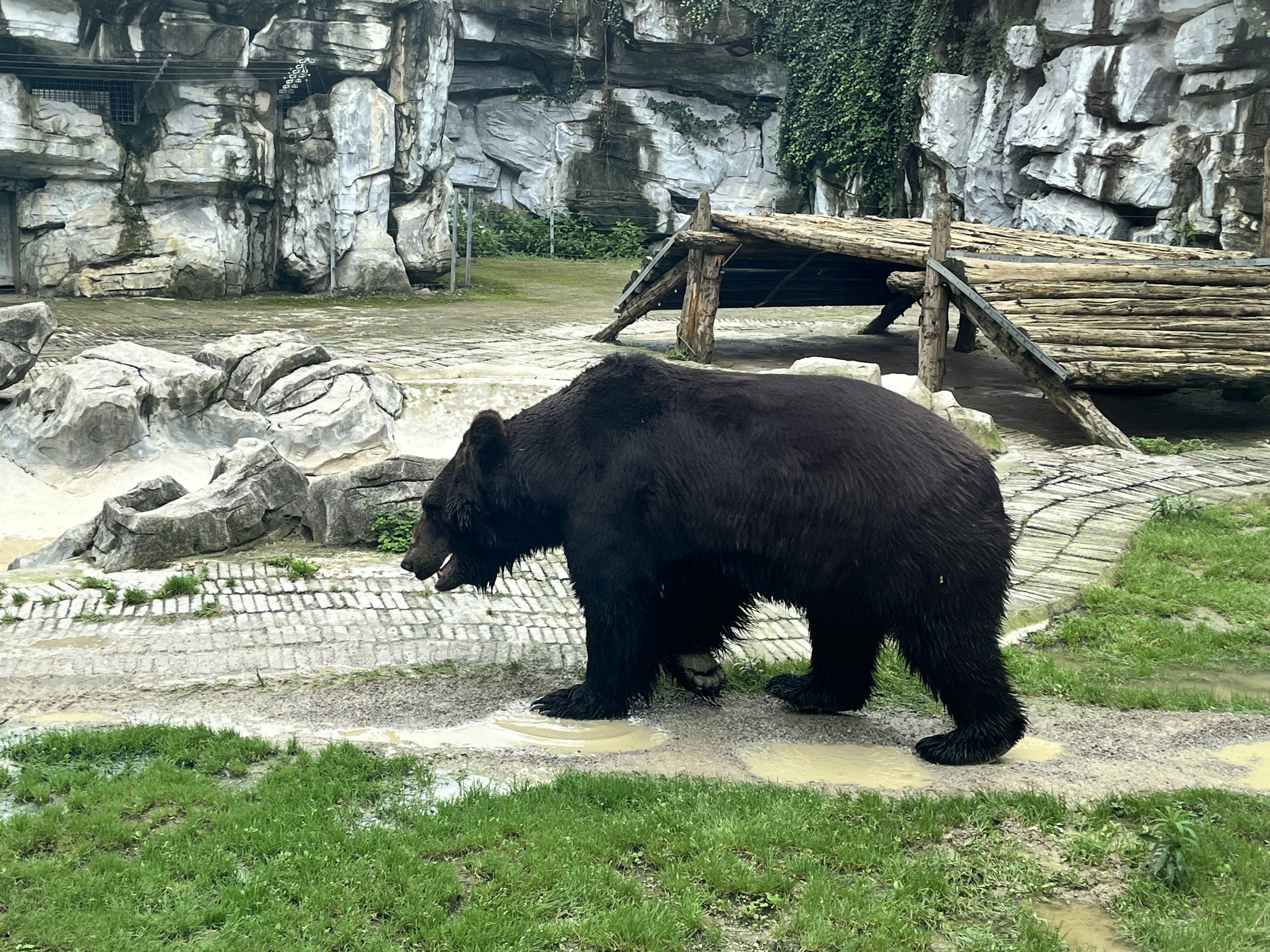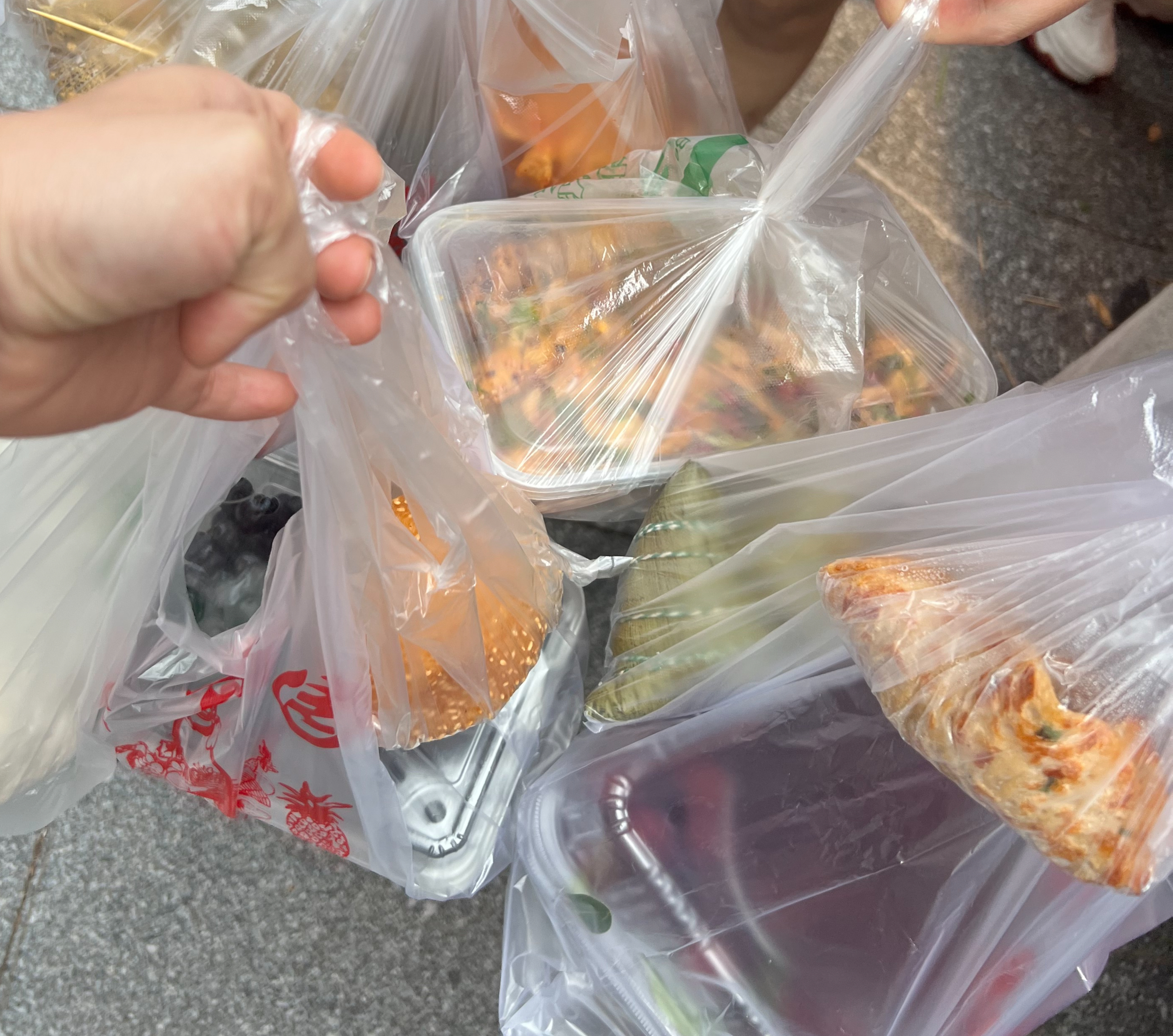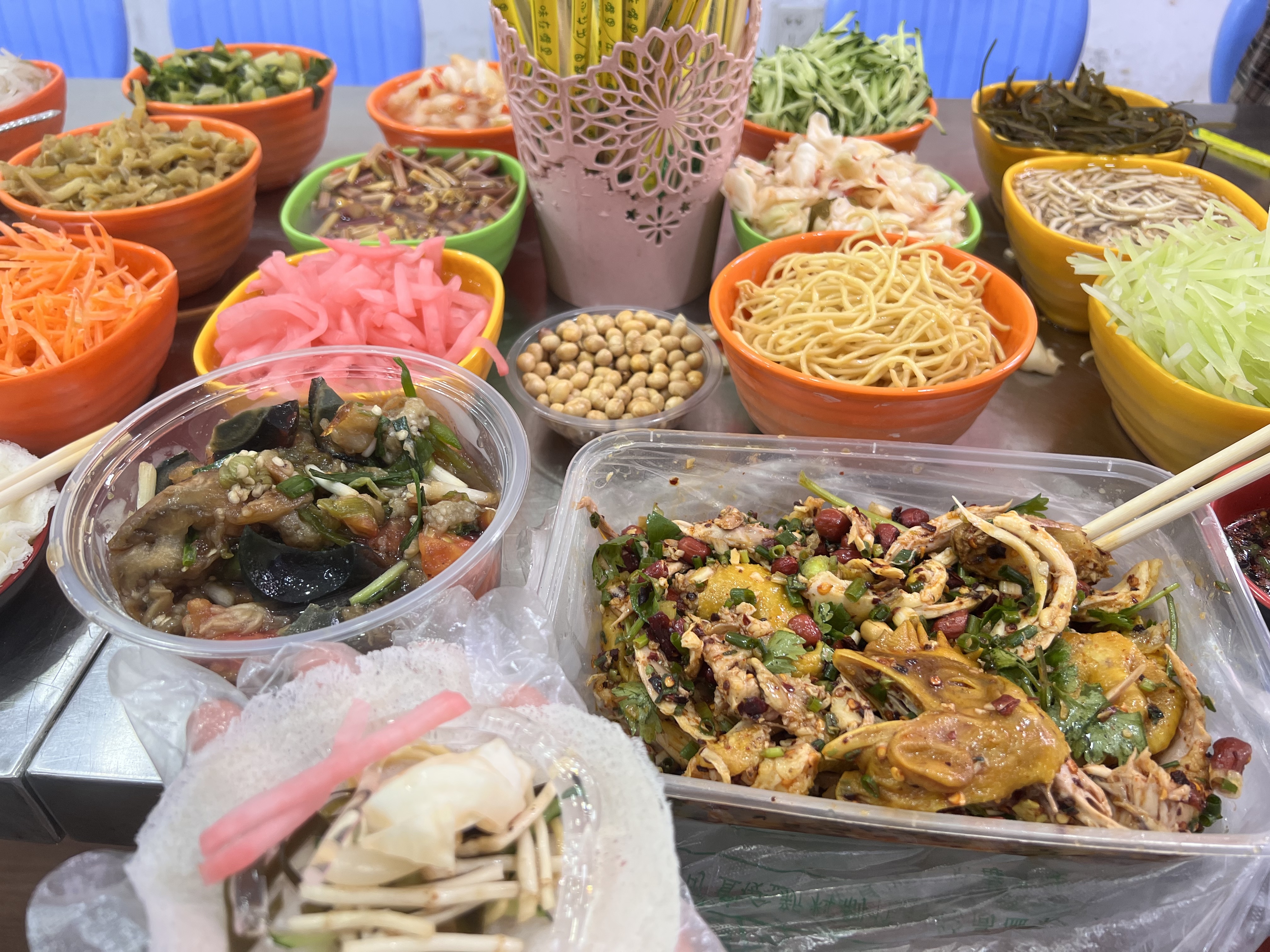During the 2024 Dragon Boat Festival holiday, my wife and I embarked on a self-guided tour of Guizhou, China. Our trip spanned six days and five nights, visiting the following destinations: Huangguoshu Waterfall in Anshun, Xiaoqikong Scenic Area in Libo, Xijiang Qianhu Miao Village, Zhenyuan Ancient Town, and Guiyang city. Although we had planned to visit Fanjing Mountain after Zhenyuan Ancient Town, we canceled the plan due to weather conditions and decided to save the hike for a future weekend.
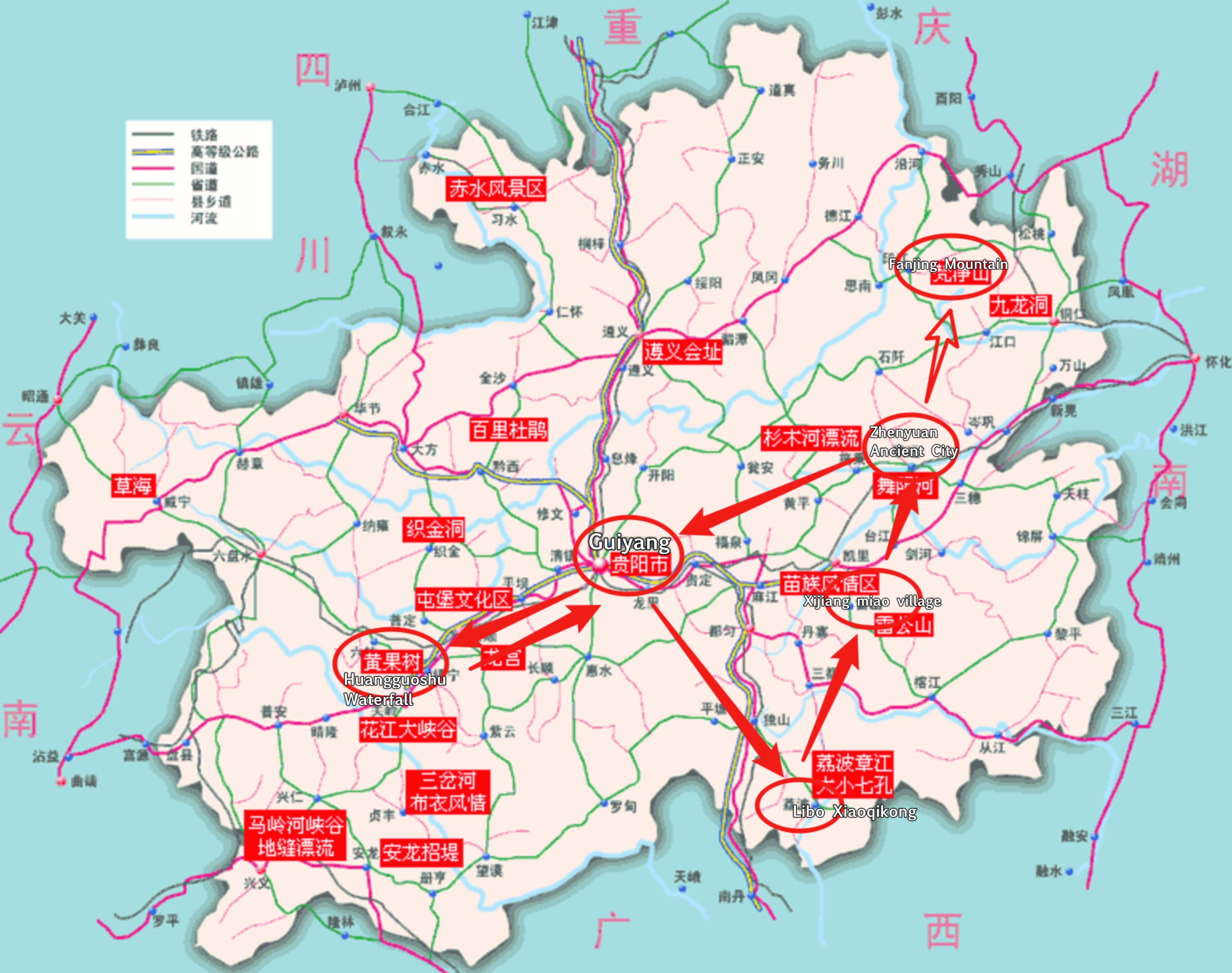
Tip: For foreign travelers visiting Guizhou, China, please note that Google Maps is not accessible in China. Instead, we recommend downloading Baidu Maps or Amap (Gaode Maps) for navigating the region. Both of these mapping services provide detailed and reliable directions, and they are widely used by locals for travel within China.
Previously, I rarely documented my travels, often just checking in with a few photos on Weibo. Nowadays, I’m taking more time to enjoy and record life.
Guizhou’s A-Level Scenic Area Ticket Policy
In March 2024, Guizhou introduced the “Four Free, One More, One Reduction” discount policy, which includes free tickets for Guangdong tourists, “one ticket multiple days” usage, and a 50% discount on highway tolls from March 19 to December 31.
Why Are Guangdong Tourists Given Free Tickets?
In 2021, Guangdong provided paired assistance to Guizhou, arranging support from six economically strong cities in the Pearl River Delta for 84 districts and counties in Guizhou. Over three years, Guangdong invested 10.453 billion yuan in financial aid, organized 5,214 projects, and facilitated employment for over 103,000 people through school-enterprise cooperation.
Six Days and Five Nights Itinerary and Major Attractions
Day 1: Shenzhen North Station to Guiyang North Station
🚄 We took a high-speed train from Shenzhen North at 16:14, arriving at Guiyang North at 20:46. The journey took about 4.5 hours, costing 400.5 yuan for a second-class seat.
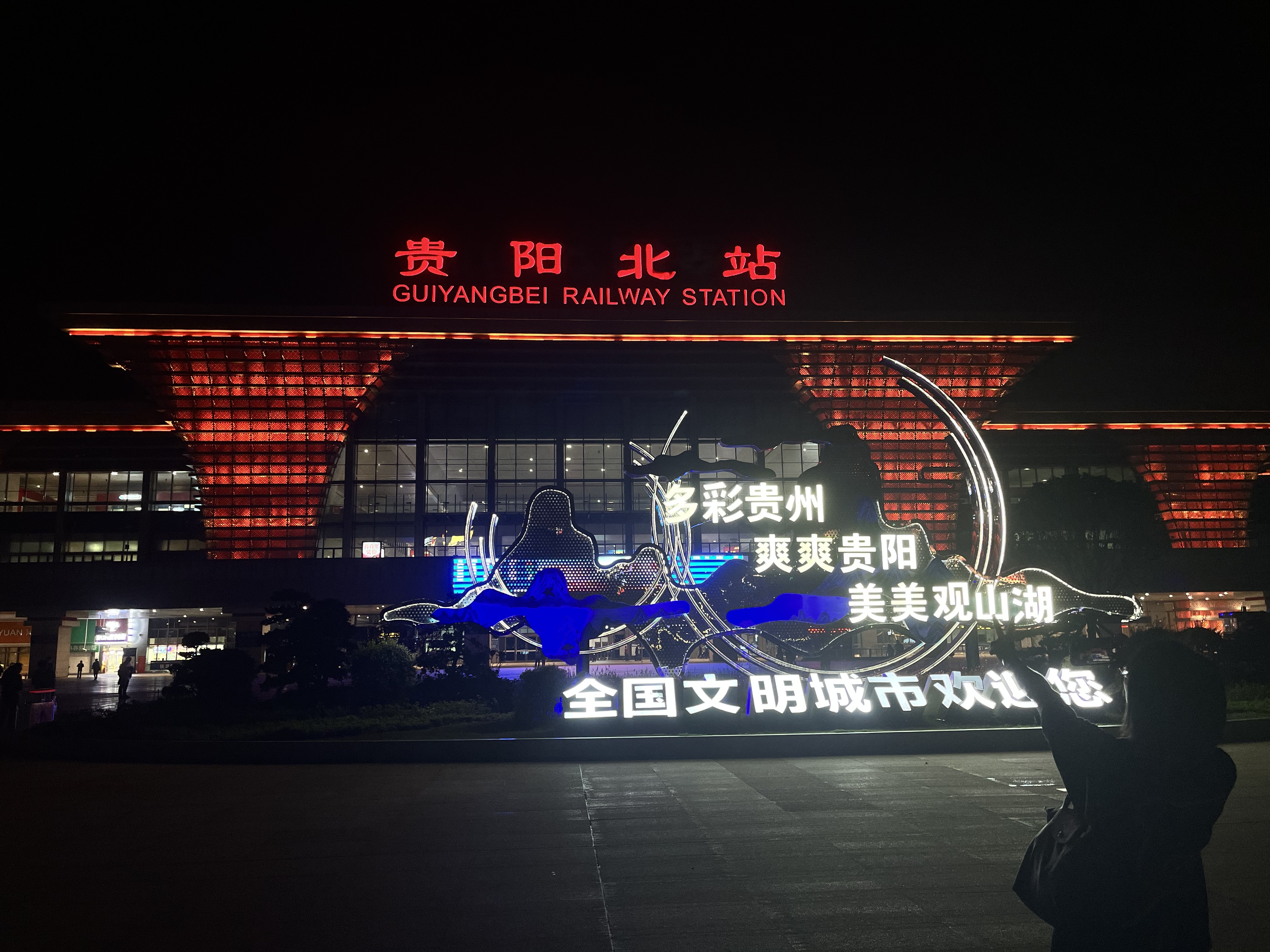
Seven years ago, I vowed never to visit Guiyang again due to a poor transportation experience. Yet, here I am, proving that youthful vows can be fleeting.
Our hotel was located across the street from Guiyang North Station in the Dream City area. Despite being only about 1 kilometer away, it took us nearly an hour to get there due to confusing signs and unreliable navigation. After checking in, we ventured out for dinner around 22:00. Dream City has numerous food options, though the area felt a bit empty, possibly due to the time or economic conditions.
We dined at a Yucheng Bone Duck restaurant and tried a tofu snack, which wasn’t to our liking.
Day 2: Guiyang North Station to Huangguoshu Waterfall and Return
We started the day with a bowl of Changwang noodles, which was quite mediocre. The intestines were bland, and the blood sausage was industrial-grade.
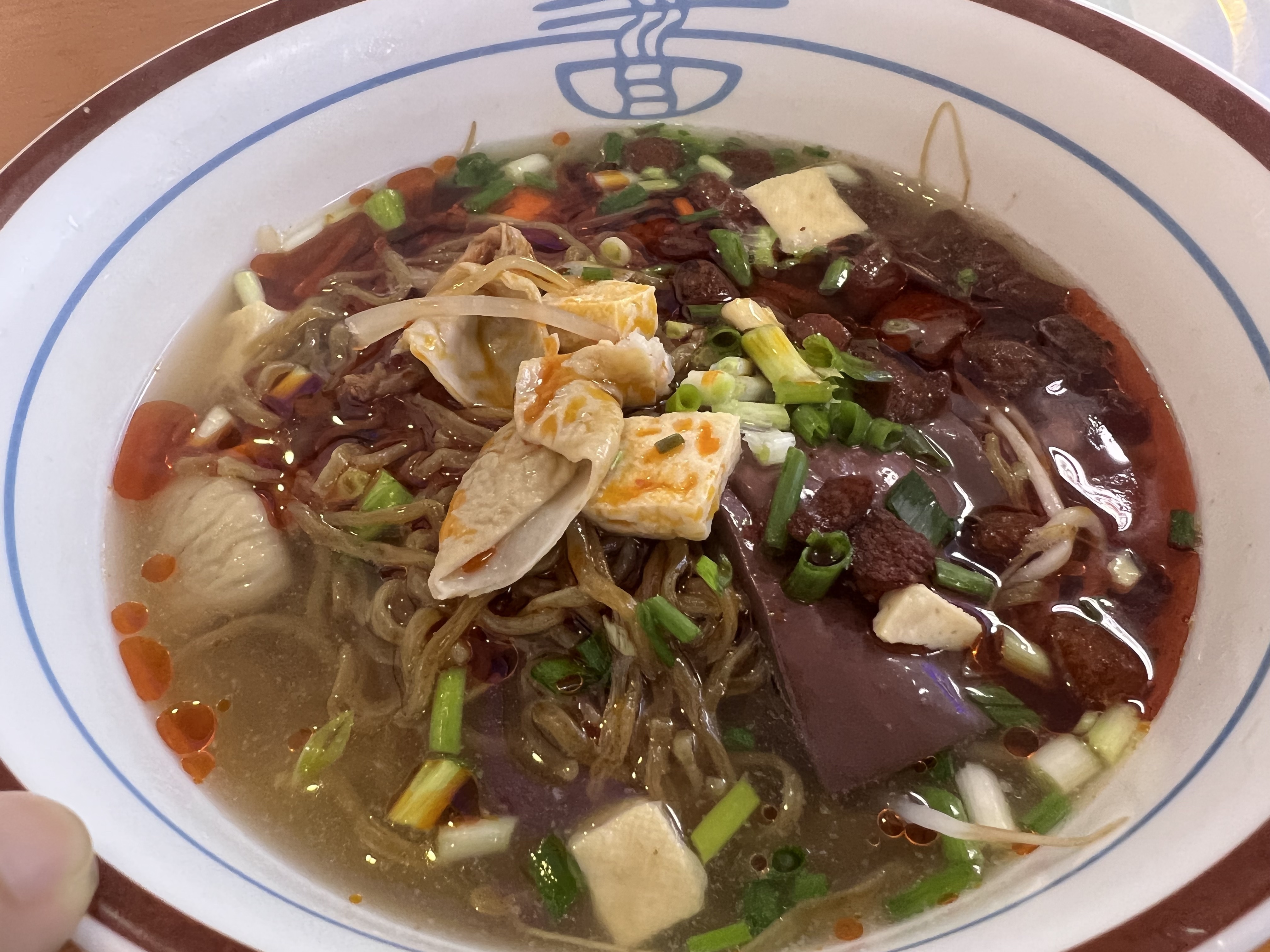
🚌 We purchased round-trip bus tickets from Guiyang North to Huangguoshu Waterfall through Ctrip for 100 yuan per person. The bus ride took about two hours, arriving at the entrance of Huangguoshu Waterfall Scenic Area in Anshun.
The Huangguoshu Waterfall Scenic Area ticket price is 160 yuan, but Guangdong tourists can enter for free, only needing to purchase a 50 yuan shuttle bus ticket.
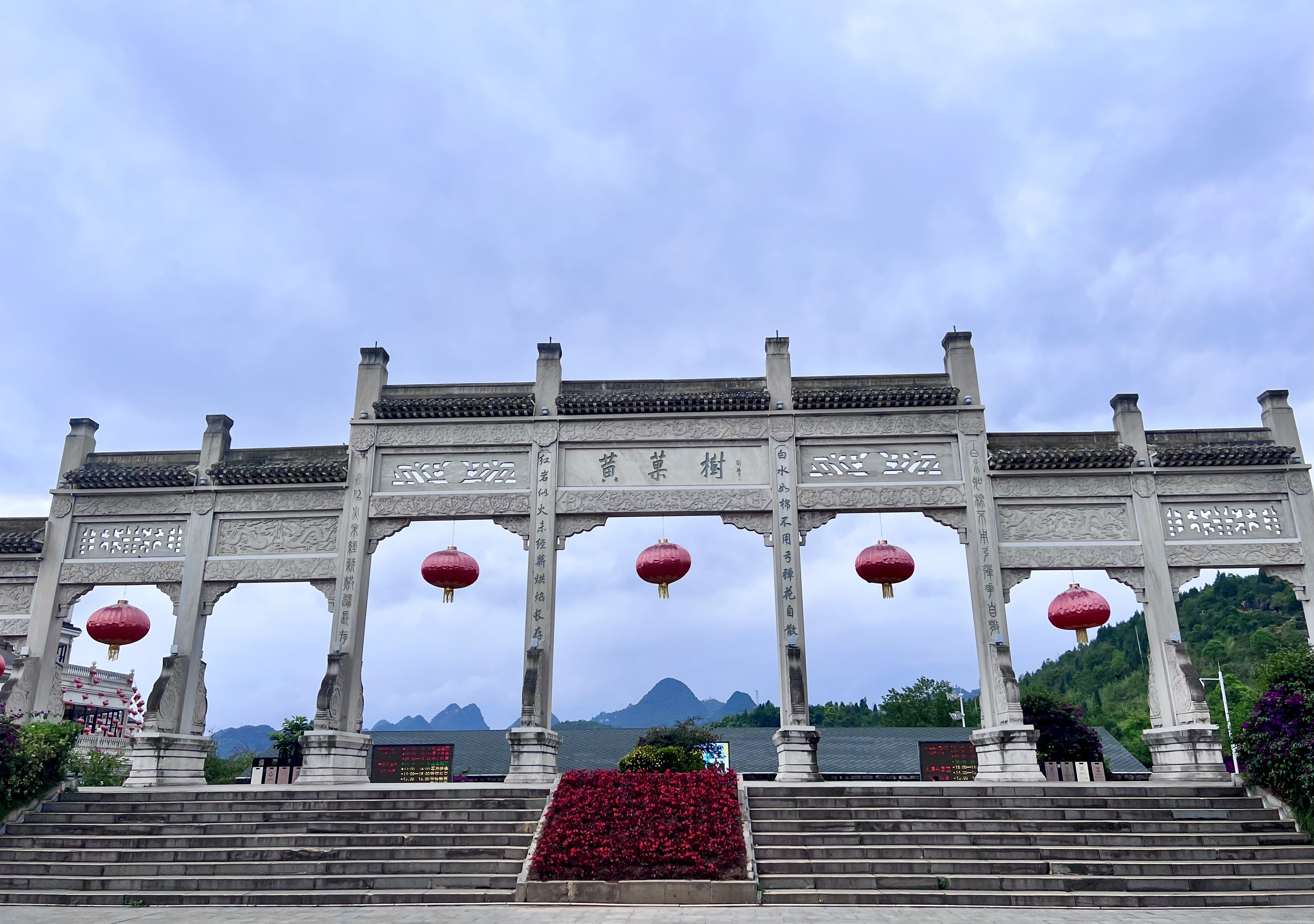
The area includes three main attractions: Huangguoshu Waterfall, Tianxing Bridge, and Doupotang Waterfall, each requiring a shuttle bus to travel between them. The scenic area features locations from the classic “Journey to the West” TV series.
The Huangguoshu Waterfall is renowned for its grandeur, thanks to the Ming Dynasty traveler Xu Xiake’s writings. It has become a famous spot due to its impressive width of 101 meters and a drop of 60-80 meters.
Xu Xiake praised the waterfall:
Breaking pearls and shattering jade, with splashes of foam surging back…
Such vastness and grandeur have never been seen before.
We walked in to the waterfall and took the cable car out for 30 yuan per person, which saved time.
After visiting the Huangguoshu Waterfall, we stopped for a meal at a nearby food area with several restaurants. The food was average, but it was more affordable compared to the fast food options inside the park.
Next, we took the shuttle bus to Tianxing Bridge, where the journey took longer. The Tianxing Cave, a large underground cavern, was impressive.
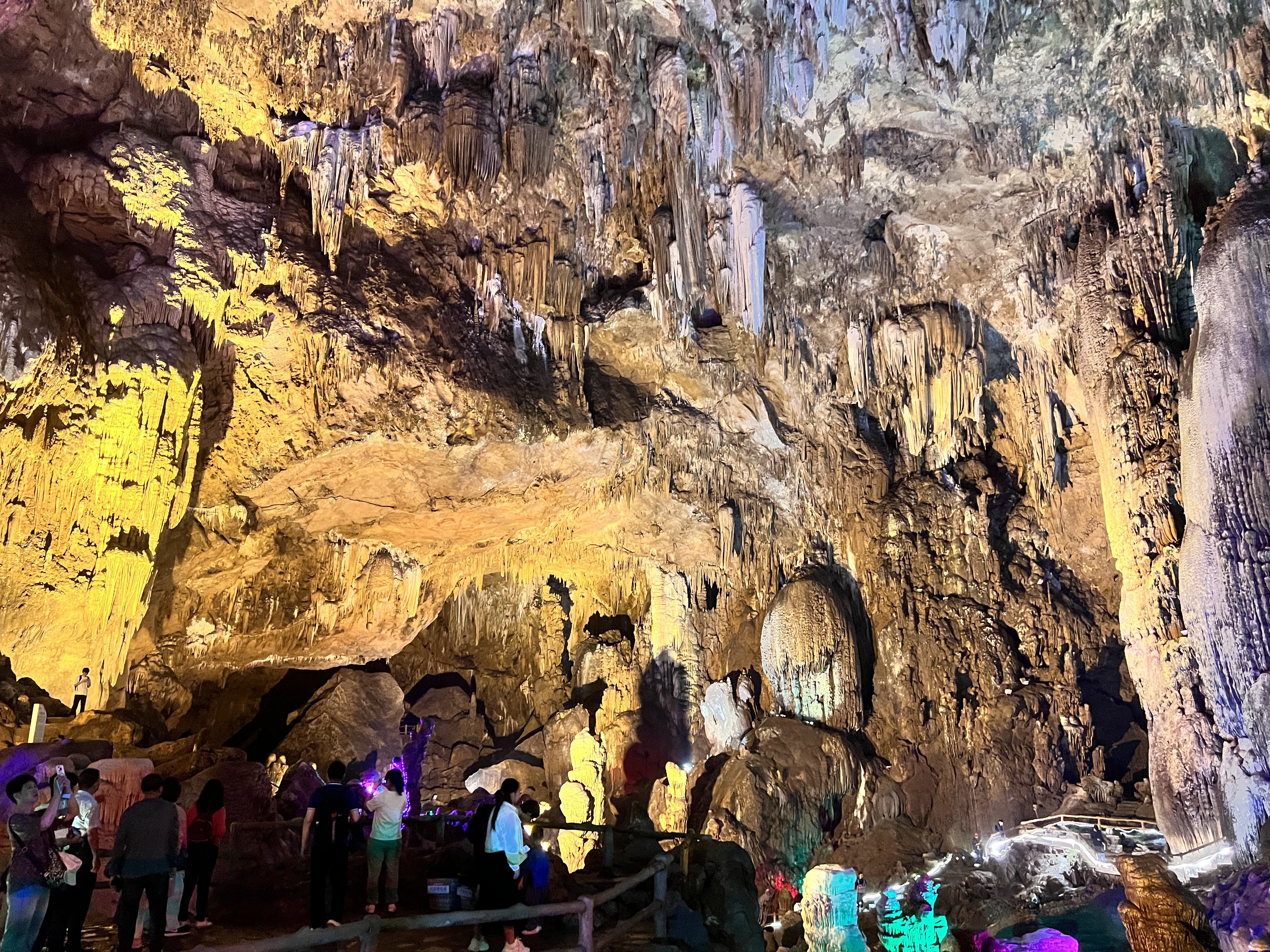
We also saw the Silver Chain Falls.
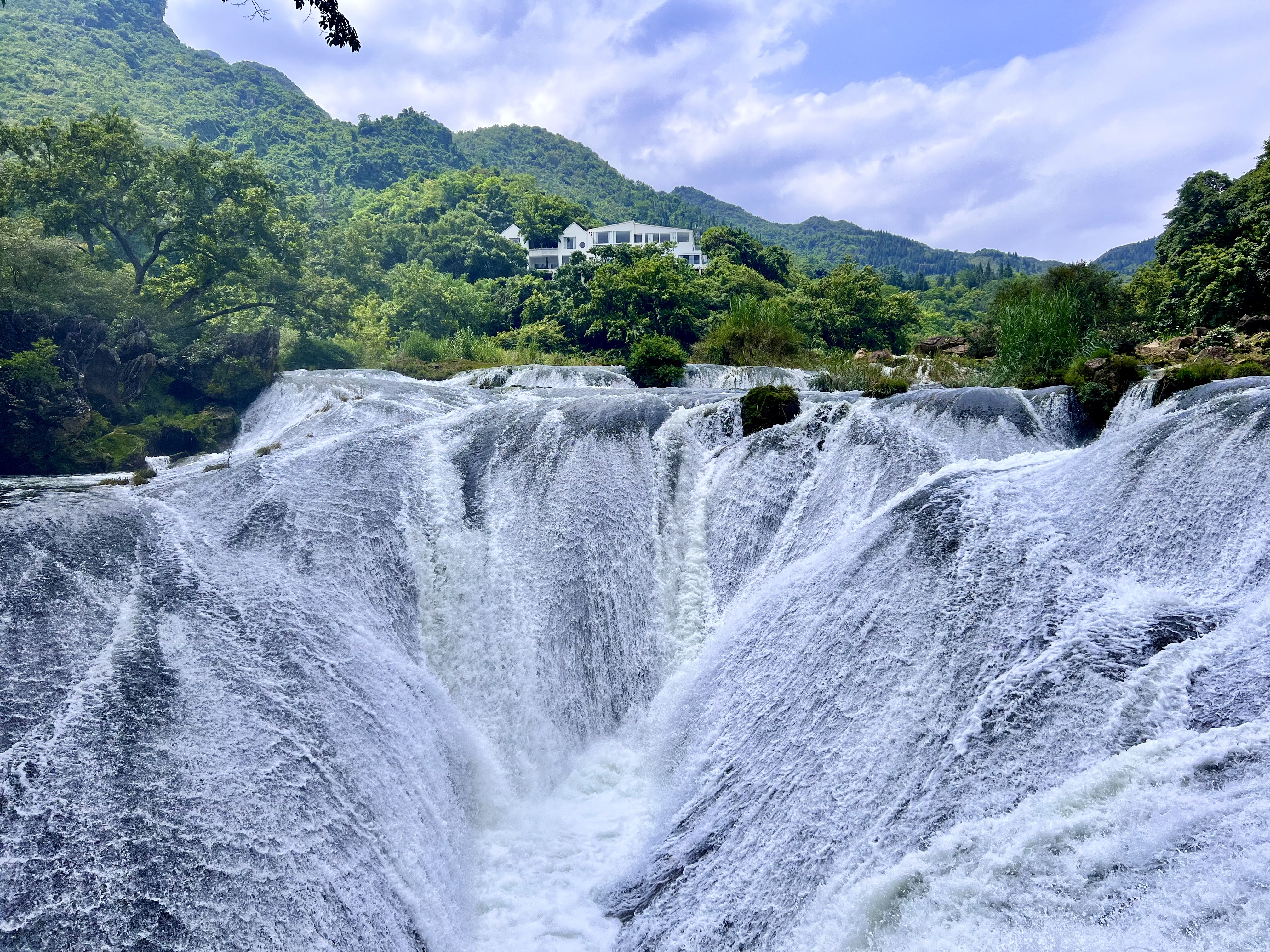
In the afternoon, we headed to Doupotang Waterfall, arriving just before 16:00. We had to return to Guiyang on a bus at 17:00, so we only visited the waterfall and then headed back.
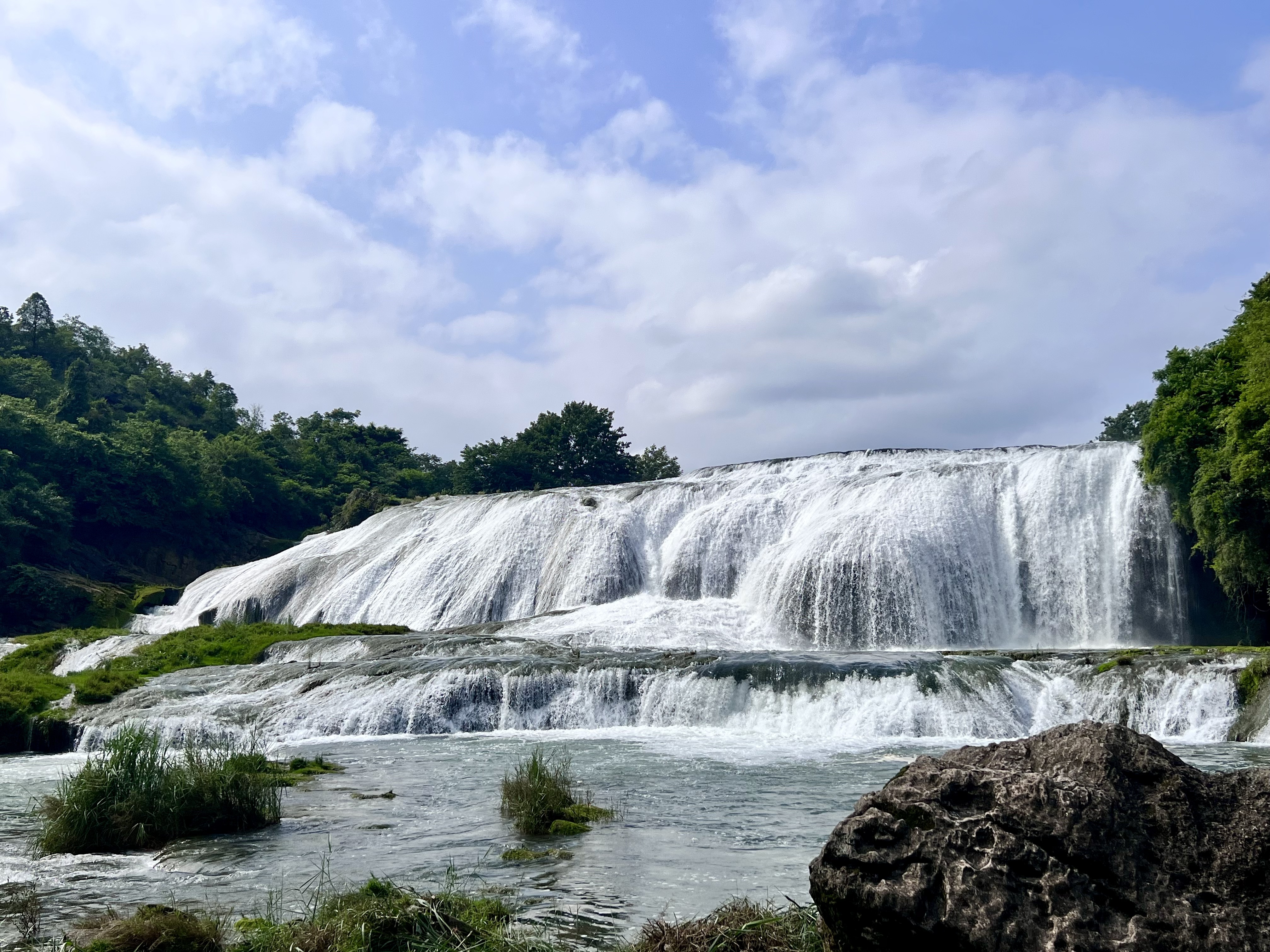
🚌 Back in Guiyang, we had a spicy chicken dinner for 80 yuan. The taste was average, but it was cheaper than eating inside the scenic area. The local cuisine is quite suited for those who like Sichuan food.
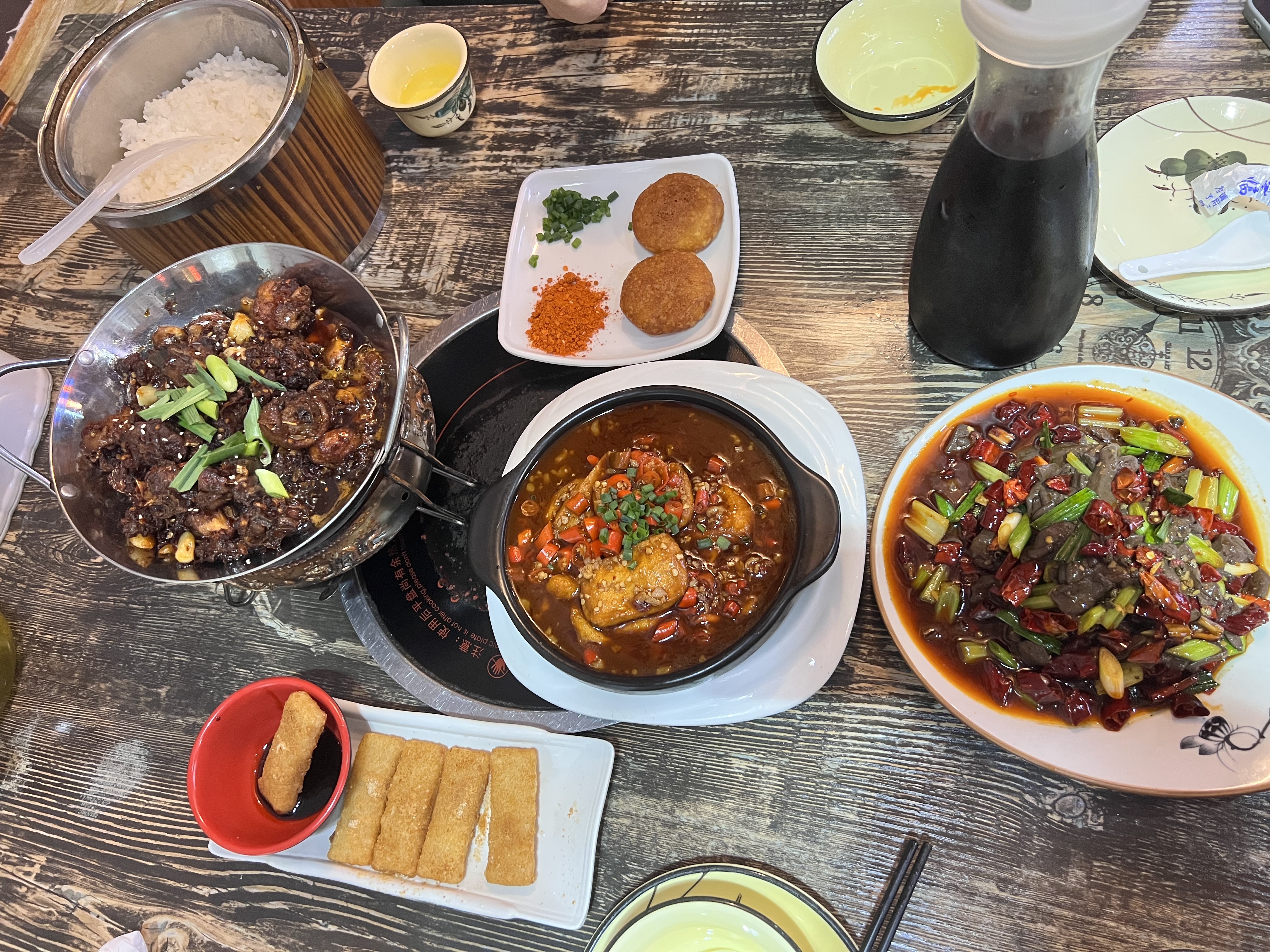
Day 3: Guiyang North Station → Libo → Xijiang Qianhu Miao Village
🚄 At 6:10 AM, take a high-speed train from Guiyang North Station to Libo. The journey lasts about 80 minutes and costs 64 CNY for a second-class seat. After arriving, walk a short distance to the nearby bus station to catch a 5 CNY bus to the East Entrance of the Xiaoqikong Scenic Area. Alternatively, a direct bus for 25 CNY is available right across the exit, which might be more convenient for those willing to spend a bit more.
The Xiaoqikong Scenic Area is located in Libo County, Guizhou Province, adjacent to Guangxi. You’ll find various food stalls around the entrance and exit. To store your luggage, there are free (no deposit required) automatic lockers on the left side of the visitor center. If they are full, you can opt for manual luggage storage.
The entrance fee for Xiaoqikong is 120 CNY. However, visitors from Guangdong Province can enter for free but need to purchase a sightseeing vehicle ticket for 40 CNY. We first took the sightseeing bus to the last attraction at the West Gate, Wolong Pond, and then walked back to the East Gate to retrieve our luggage. Since our afternoon plan was to take a bus to Xijiang Qianhu Miao Village, we only explored the main route of Xiaoqikong and didn’t cover all the secondary trails.
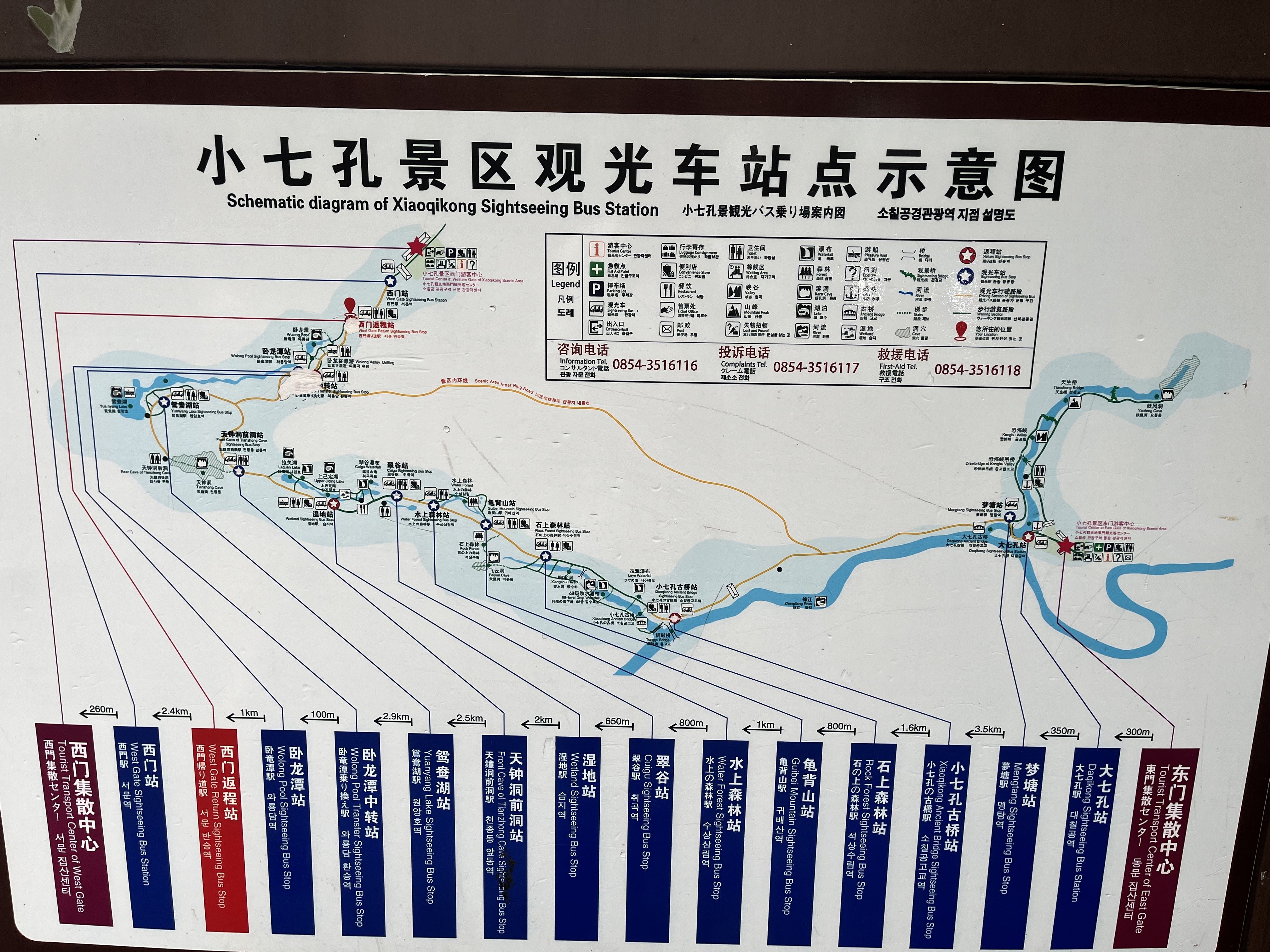
It is often said that “After visiting Jiuzhaigou, don’t look at water, except for Libo Xiaoqikong.” Xiaoqikong, a UNESCO World Heritage site, combines mountains, rivers, caves, forests, waterfalls, lakes, and rocks into one scenic area and is praised as the “Emerald on the Belt of the Earth.” It is indeed worth visiting!
The Xiaoqikong Ancient Bridge was built during the 15th year of the Daoguang reign in the Qing Dynasty (1835). It used to be a major transportation route connecting Guizhou and Guangxi.
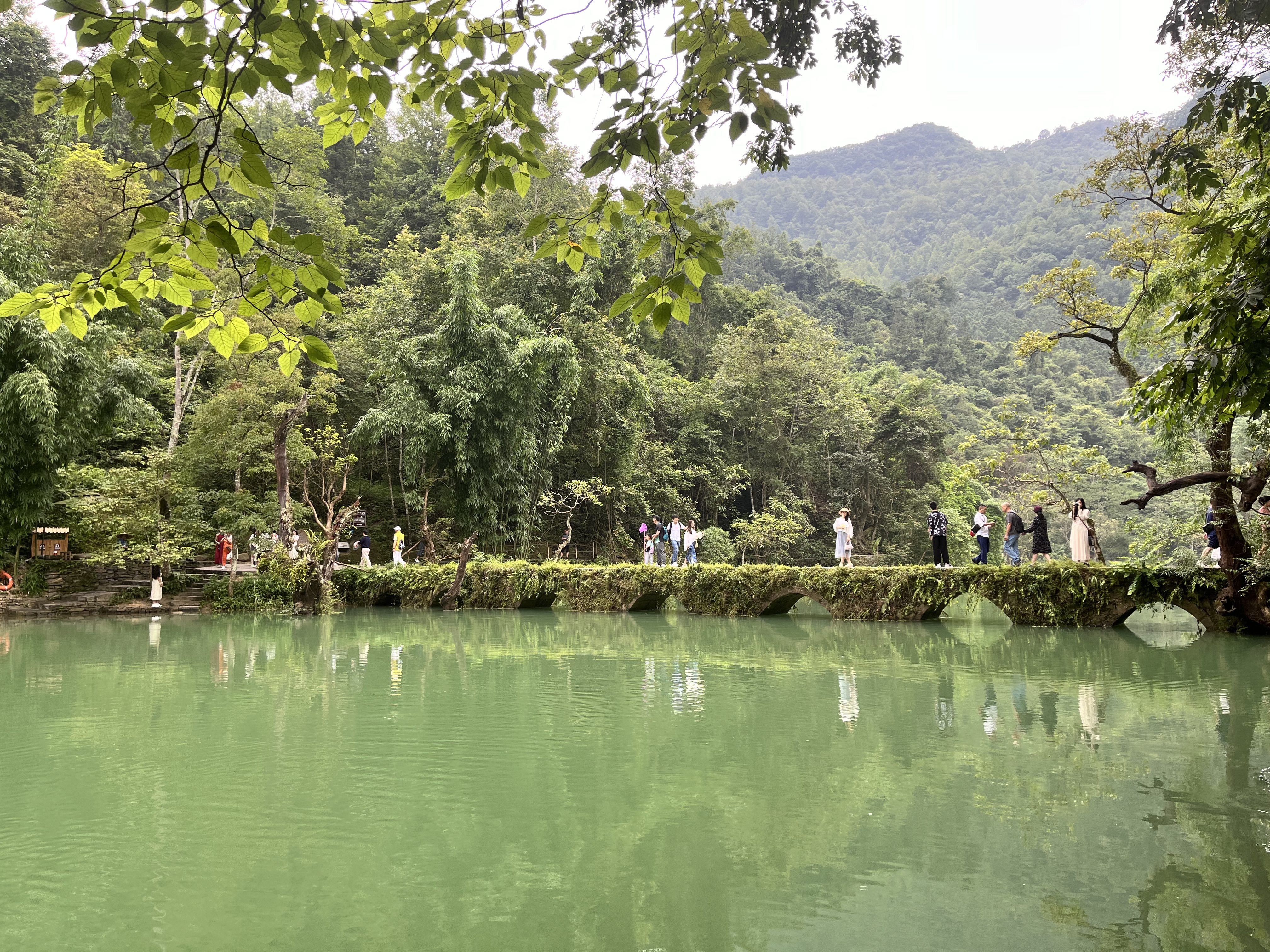
“Thousands of years of mountain rocks and waves, the Xiangshui River Bridge is ten thousand years old” — The inscription at the Xiaoqikong Bridge in Guizhou commemorates this ancient bridge, which has transformed from a bustling trade route into a national 5A scenic area.
The Xiaoqikong Scenic Area was also featured in the popular drama “The Night of the Brave,” and the Xiaoqikong Ancient Bridge appeared multiple times in the show.
I have a knife to protect Sang Sang’s good sleep.
I have two knives to cut down the weeds in the mountains.
I have three knives to eliminate injustices in the world.
🚌 We purchased a bus ticket to Xijiang Qianhu Miao Village online. The bus departs from the parking lot outside the East Entrance visitor center of Xiaoqikong, costing 110 CNY for a journey of about 3 hours. We opted to disembark at the West Gate, closer to our accommodation, as the bus’s final stop is at the North Gate.
Xijiang Qianhu Miao Village is located in Xijiang Town, Leishan County, Guizhou Province. Surrounded by mountains with terraced fields stretching to the sky, the village features traditional stilt houses arranged along the slopes, creating a picturesque landscape of green mountains and flowing waters.
The entrance fee to Xijiang Qianhu Miao Village is also waived for visitors from Guangdong Province (originally 90 CNY). Within the scenic area, there is a shuttle bus service for 5 CNY per ride. After entering the area, you can take a bus-type shuttle to the first viewpoint in about 5 minutes. To access the Miao Village area, you need to transfer to a smaller shuttle bus for another 5 CNY. The final stop is the Number One Wind and Rain Bridge (one of the seven wind and rain bridges in the village). Our accommodation was located near the street leading from the viewpoint to the Number One Wind and Rain Bridge, where we checked in, dropped off our luggage, and took some photos.
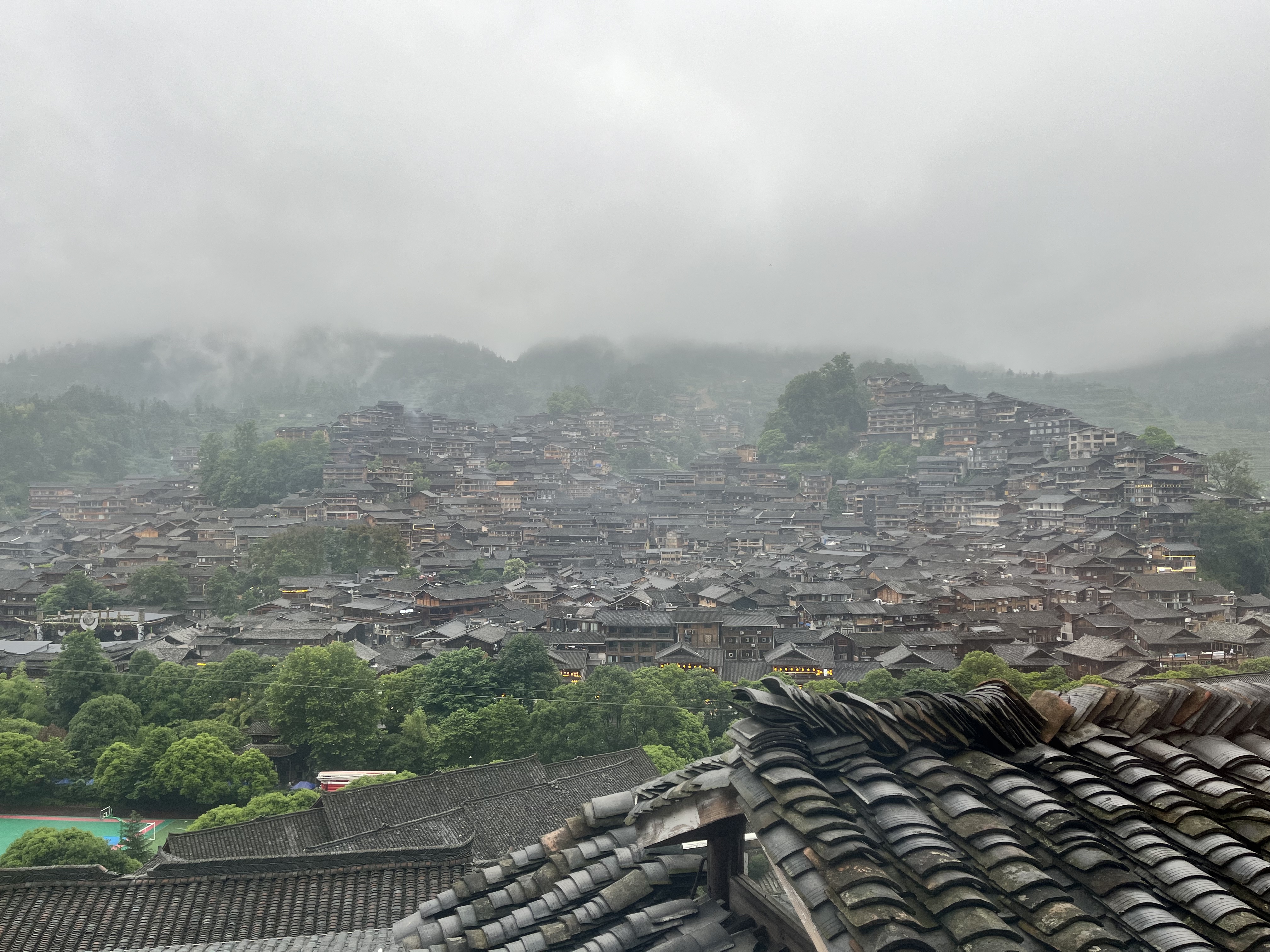
Across from us was Xijiang Qianhu Miao Village, home to over 1,400 households and 6,000 people, with Miao ethnic population making up 99.5%. It is currently the largest Miao village in China and worldwide.
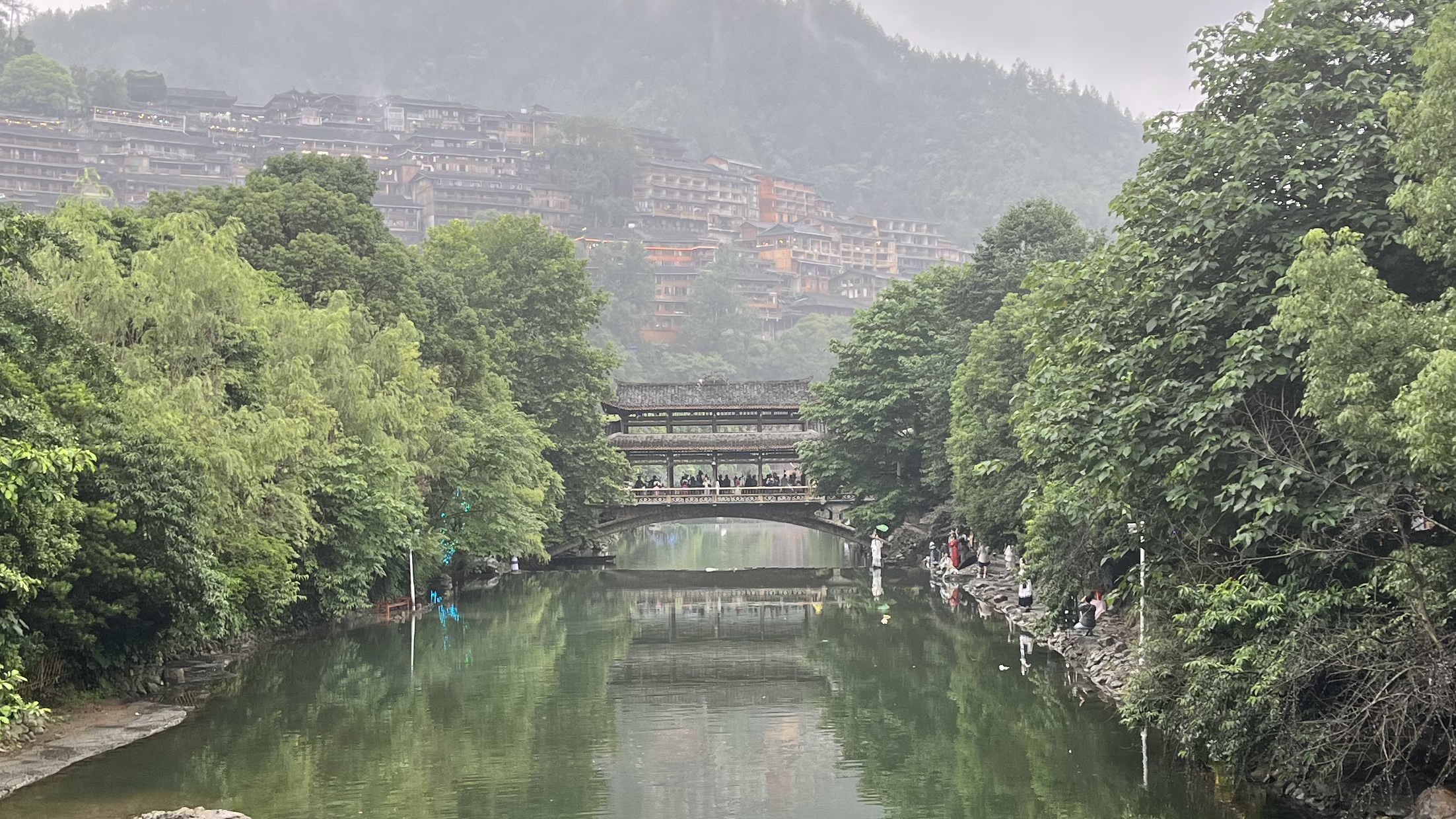
The area around the Wind and Rain Bridge is lively with many restaurants and shops selling Miao clothing for photos. We had a sour soup fish hotpot for dinner, which was average. Many restaurants are not run by locals. Street vendors selling black pig skewers for ten CNY each are a local specialty; although the pig legs looked impressive, the taste was quite average.
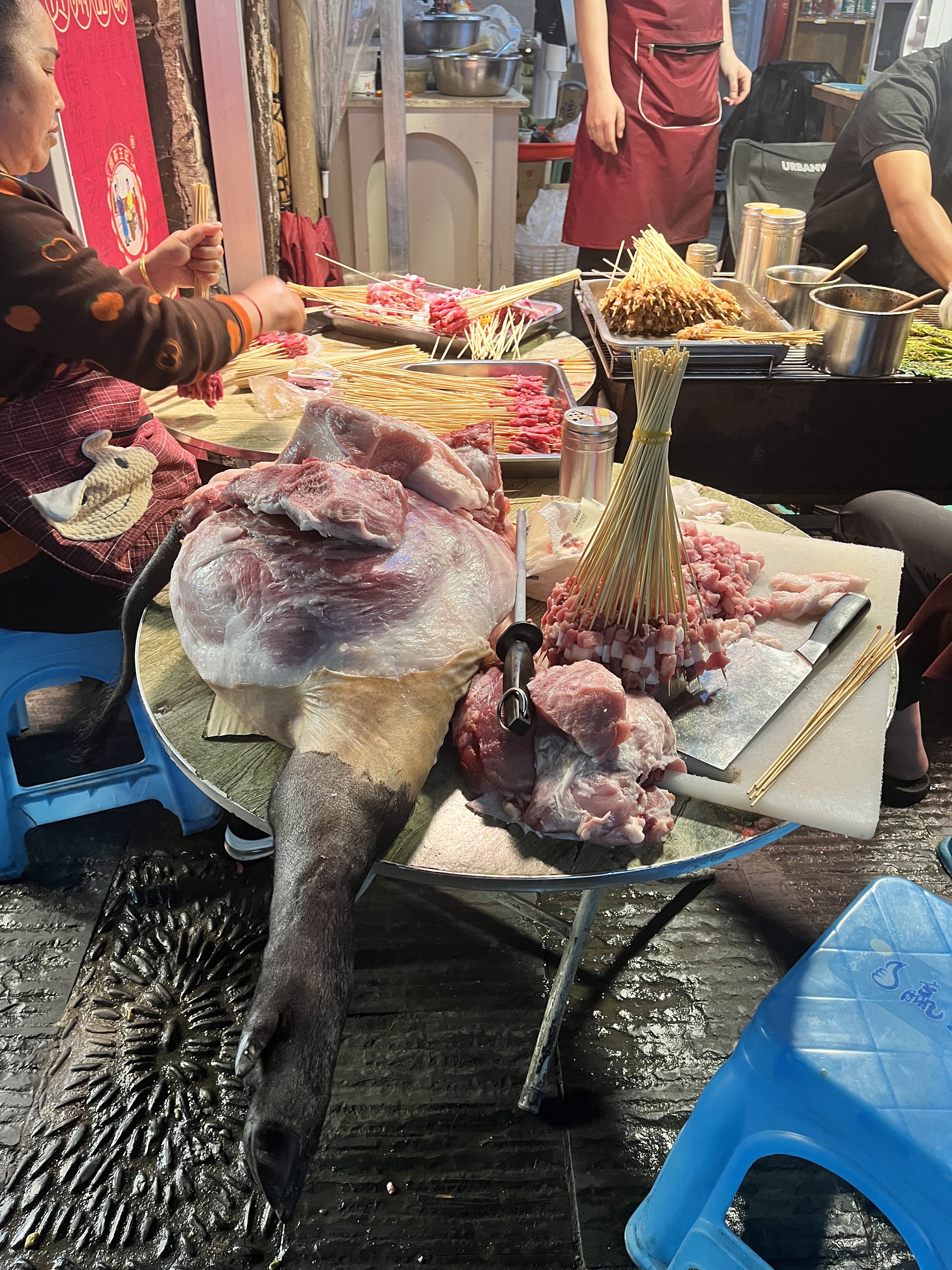
After enjoying a meal, we took a stroll to a viewing platform to see the night view, but it was crowded.
We averaged around 30,000 steps each day. As someone who enjoys a more relaxed travel style, my legs were exhausted. My wife, who prefers a more intense itinerary, was still going strong, so she ended up carrying the luggage for the remainder of the trip.
I prefer a more spontaneous approach to travel, with a rough plan in mind. I don’t think it’s necessary to follow a strict itinerary or rely heavily on other people’s guides. I enjoy eating and playing where I like, and if I’m tired, I rest. In contrast, my wife enjoys a meticulously planned schedule, which gives her a sense of accomplishment and security. For me, strict plans can be stressful if things don’t go as expected, which can detract from the enjoyment of the trip. Nevertheless, having a plan is still important due to time constraints.
Day 4: Xijiang Qianhu Miao Village → Zhenyuan Ancient Town
After a good night’s rest, we had some sour soup noodles in a narrow alley of the Miao village, which was decent. In the morning, I accompanied my wife for a photo shoot in Miao ethnic attire. We chose the 299 RMB package, which included two scenes: a rooftop and a riverside. The rooftop experience was quite unique, as not everyone gets the chance to visit someone’s rooftop for free. The rooftop was specially reinforced for the photo shoot.
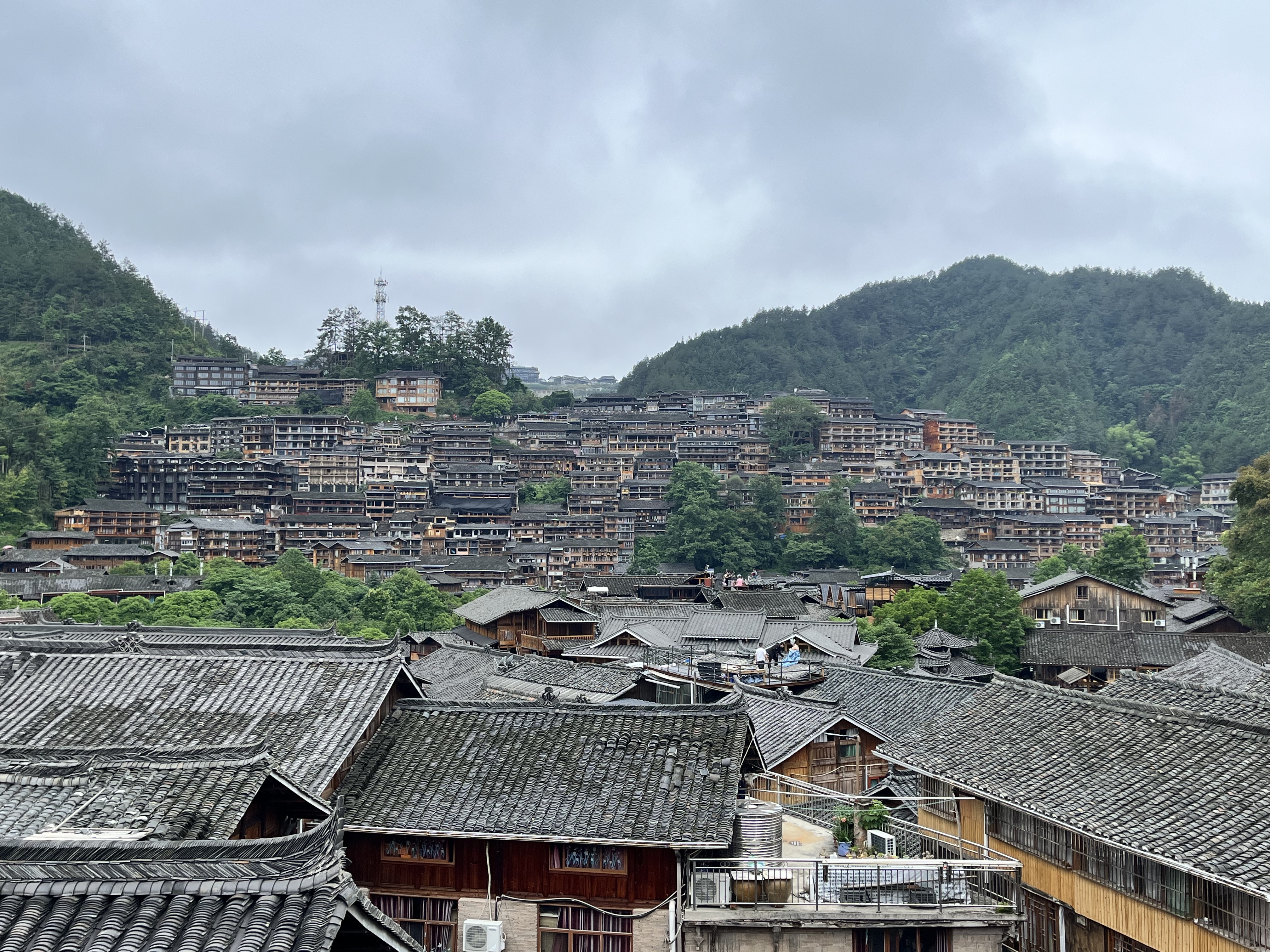
From a distance, there were others also taking photos on the rooftop.
Thus, we have visited all the main spots on our list: “Huang Xiaoxi” (which is a phonetic play on Anshun’s Huangguoshu Waterfall, Libo’s Xiaoqikong, Xijiang Qianhu Miao Village, Zhenyuan Ancient Town, Chishui Danxia, Xingyi’s Wanfenglin, and Tongren’s Fanjing Mountain).
🚌 We arranged a 3 PM bus to Zhenyuan with the help of our hotel’s owner. In the afternoon, we took a shuttle bus back to the eastern gate of the Miao village, then a two-hour bus ride to Zhenyuan County in Qiandongnan. I had to endure a long wait due to drinking too much water. The bus station is next to the train station.
Zhenyuan Ancient Town is located in Zhenyuan County, Qiandongnan Miao and Dong Autonomous Prefecture, Guizhou Province, and has a history of over 2,280 years, dating back to 277 BC during the reign of King Zhao of Qin. In 1226, the town was officially named “Zhenyuan,” a name that has remained to this day. Zhenyuan was a major military base during the Yuan Dynasty due to its strategic location between Yunnan and Chu, which attracted merchants and transformed it into a commercial hub.
The Suyang River winds through the town in an “S” shape, and during the Dragon Boat Festival, we saw teams training for dragon boat races.
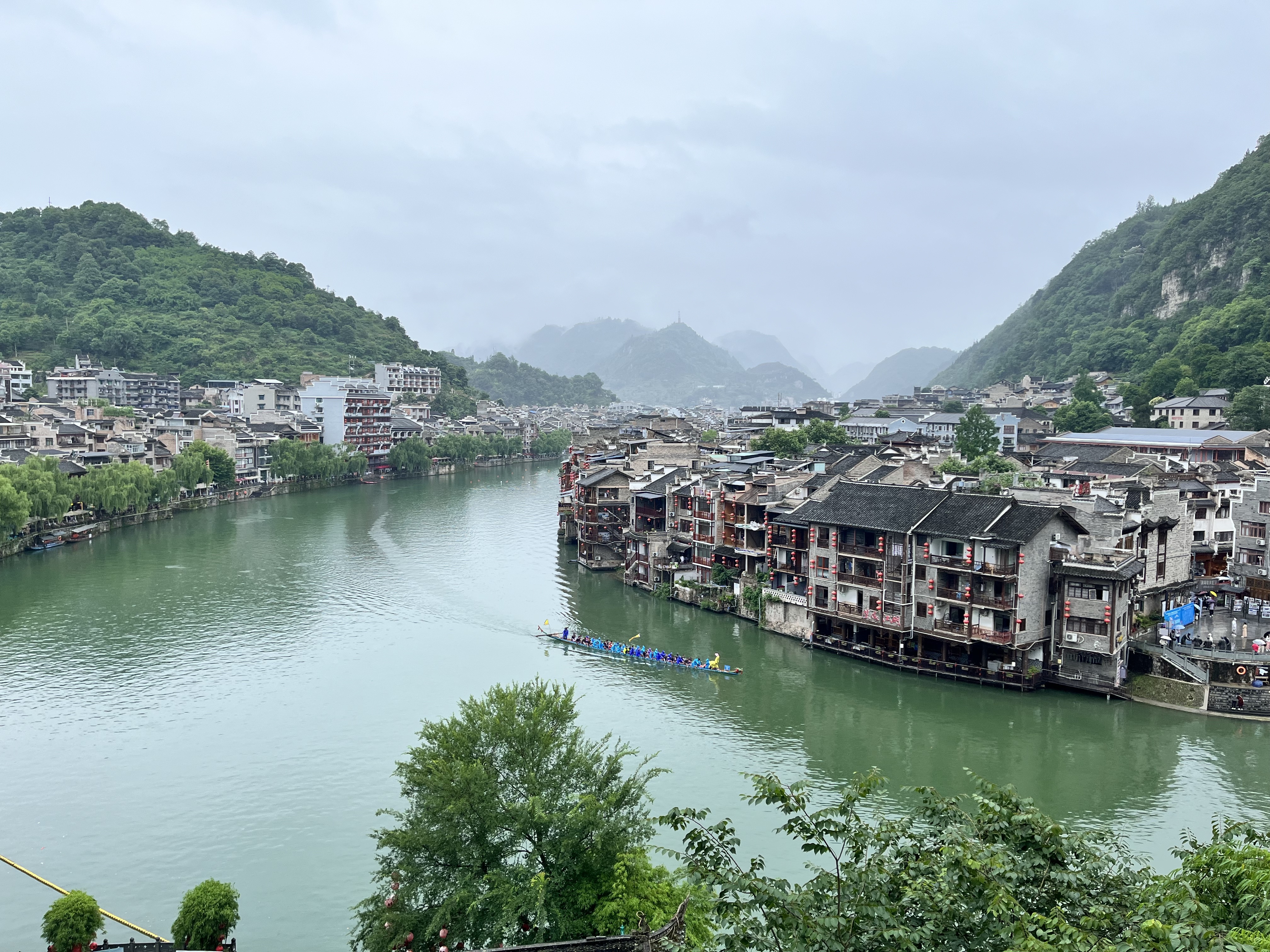
For dinner, we had tofu flower grilled fish near the Zhusheng Bridge, which was average.
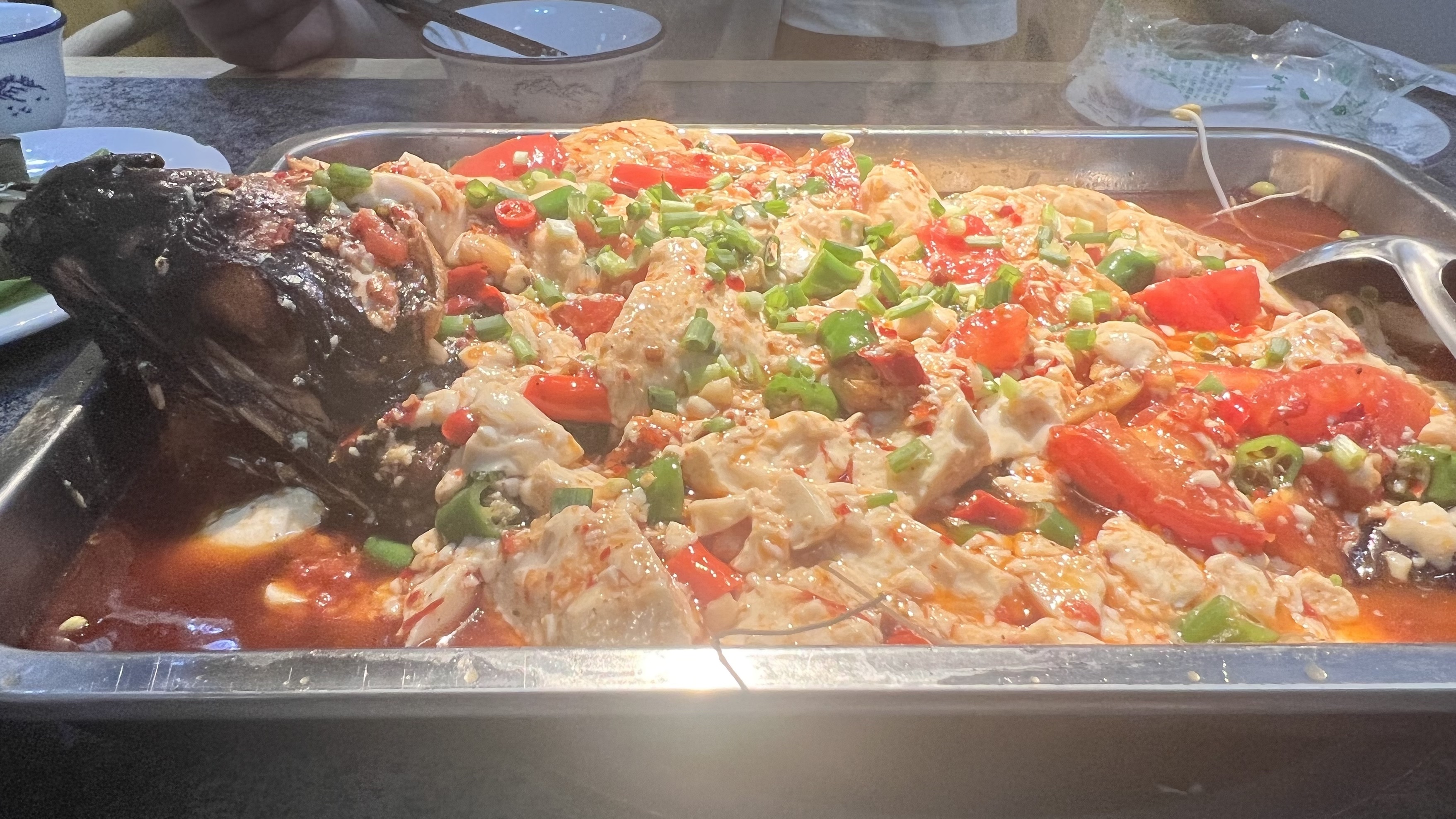
Zhusheng Bridge is a key point on the ancient Xiang-Qian-Dian Trail, built in the early Ming Dynasty and originally named Xiqiao. It was renamed Zhusheng Bridge during the Kangxi Emperor’s birthday celebrations.
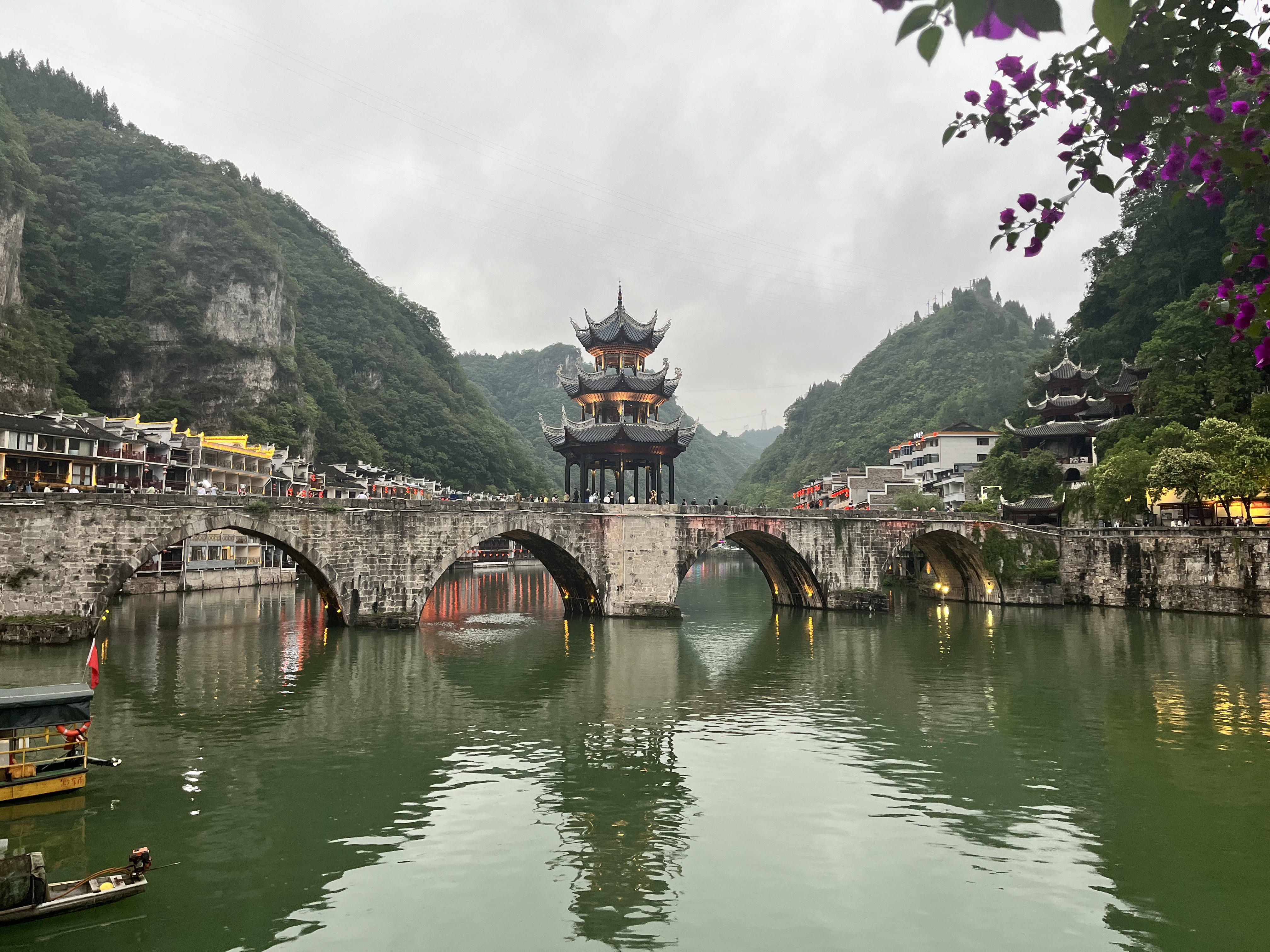
After dinner, we walked around the riverbanks to enjoy the night view, and there was a drone show above Zhusheng Bridge.
Day 5: Zhenyuan Ancient Town → Guiyang Station → Guiyang East Station
Since we canceled the trip to Fanjing Mountain, today was relatively relaxed. We spent the day exploring old alleys, visiting museums, climbing Shaping Mountain (which is free, but not very interesting), and visiting Qinglong Cave (also free) and the He Ping Village Ruins, taking a walk along the river.
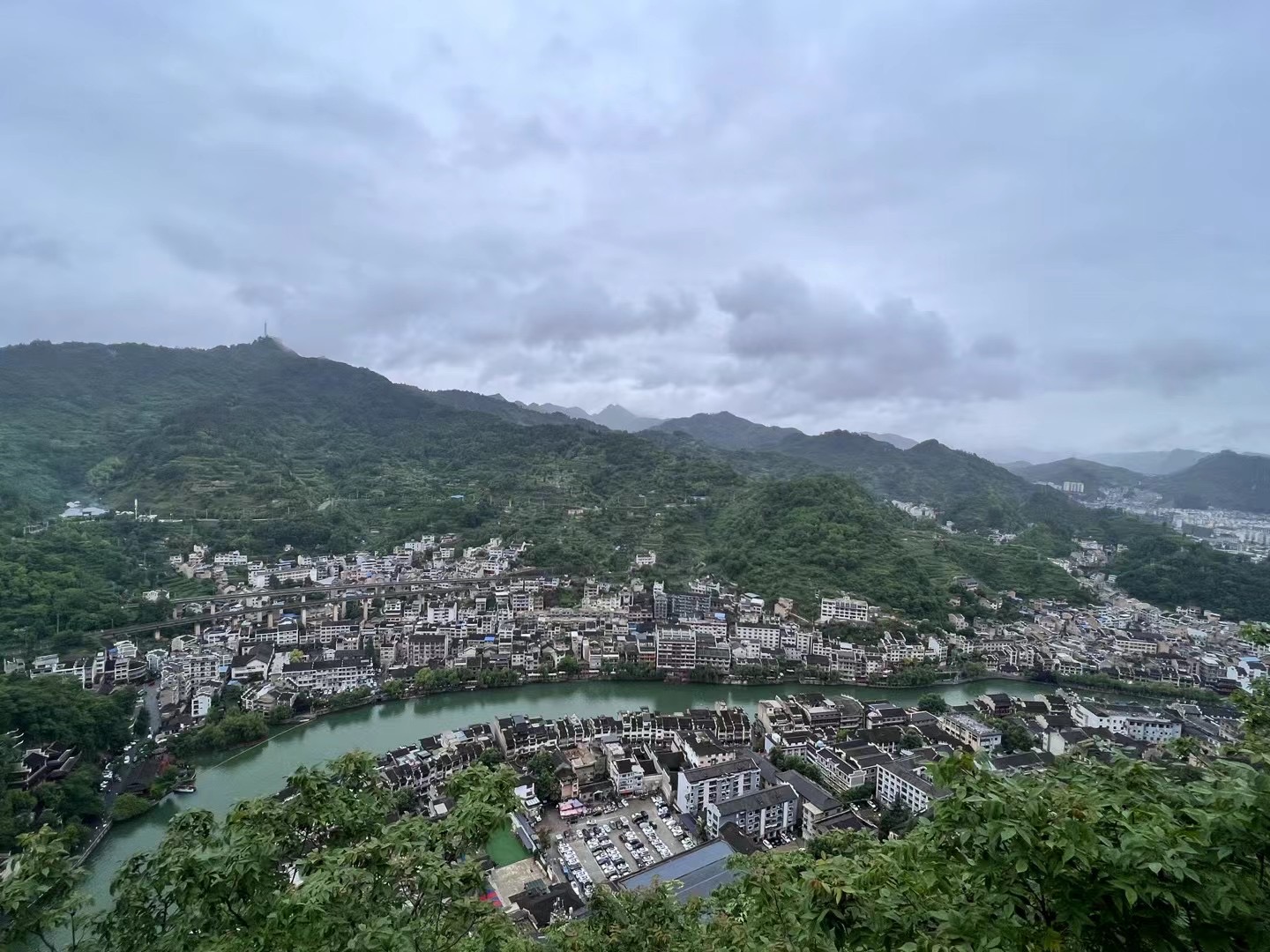
This town definitely has an ancient feel. Although commercialized, it doesn’t have a heavy commercial atmosphere. It sometimes feels like a larger version of Jiangnan, and is said to be the “Venice of the East.”
We had local tofu pudding in an alley. It was similar to tofu pudding from other regions but could be seasoned to taste, either sweet, salty, or spicy. This tofu pudding is different from that in Leshan, in my opinion, it’s just a small bowl of tofu with added seasonings.
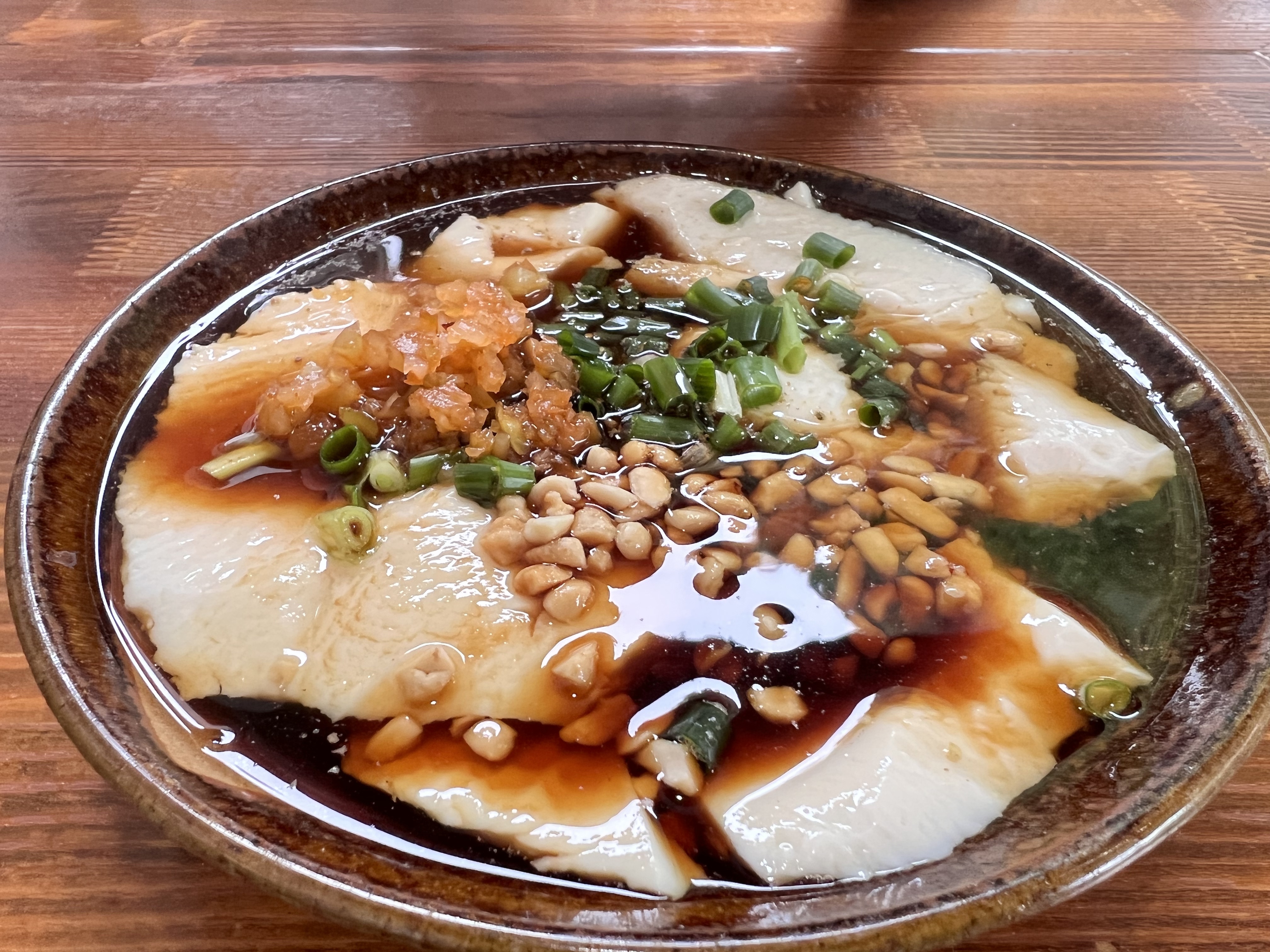
In the afternoon, we went to Zhenyuan Station, where we had a local dish called “Guai Lu Fan,” a spicy rice mixed with green beans and preserved meats. We took a green train to Guiyang Station for a four-hour ride. A minor issue was that we originally planned to go to Fanjing Mountain but canceled the trip, so we didn’t change our hotel reservation and ended up having to take a taxi from Guiyang Station to our hotel near Guiyang East Station. Guiyang East Station was quite deserted late at night, and it took us some time to find the hotel. By then, we were exhausted. We ended up visiting all the train stations in Guiyang.
Day 6: Guiyang East Station → Qianling Park → Guizhou Provincial Museum → Guiyang East Station → Shenzhen North Station
Today is the last day of our trip and also the Dragon Boat Festival. Our high-speed train back to Shenzhen North Station departs from Guiyang East Station this evening.
In the morning, we left our luggage at the hotel for convenience, so we could explore without heavy bags and pick up our luggage later before heading to the station.
We spent the morning visiting Qianling Park, which is free to enter. I had been here before, but my memory was hazy; I only remembered that there were monkeys on the mountain. We entered through the east gate and exited through the south gate, as the east gate is less crowded compared to the south.
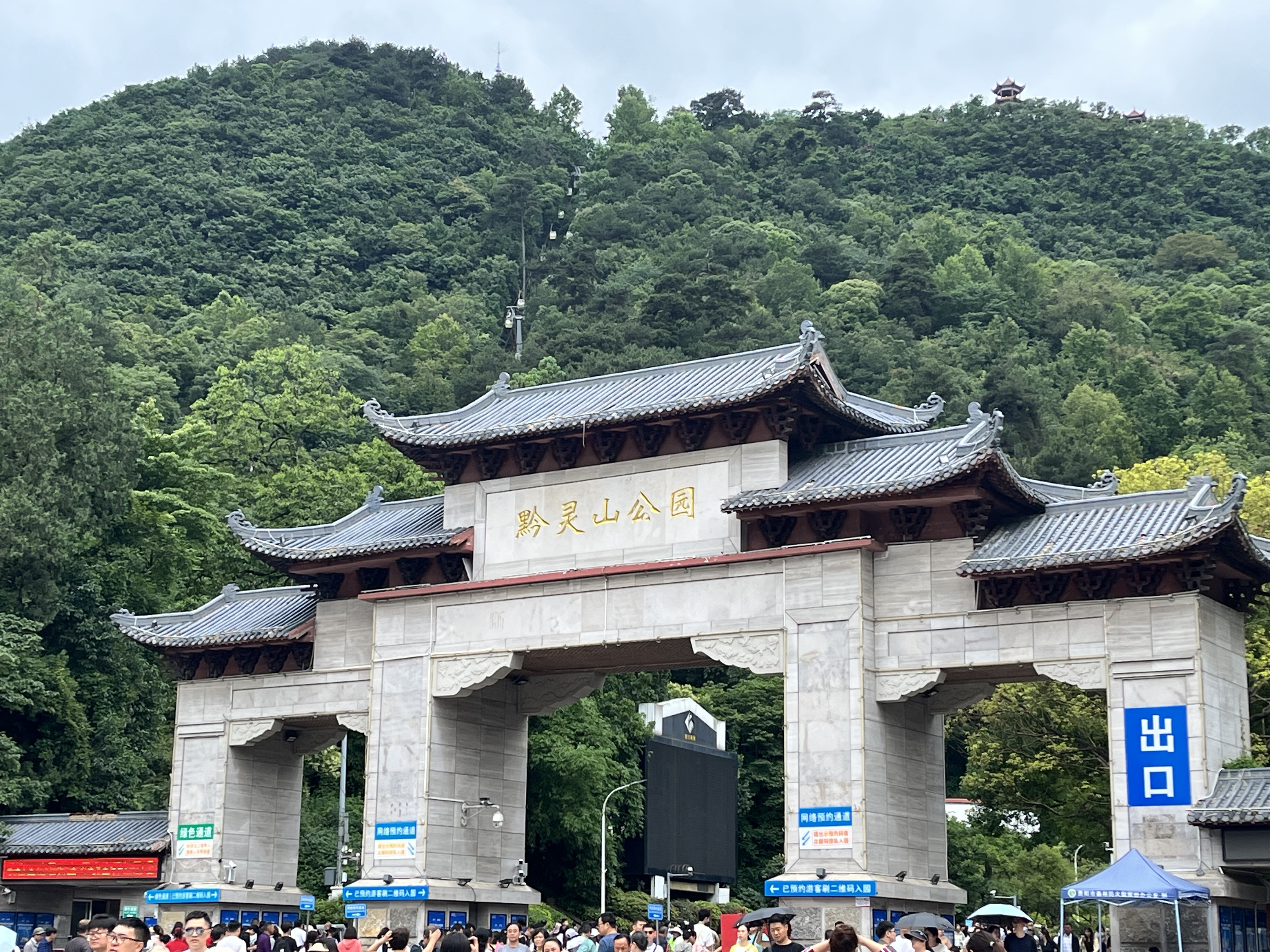
Entering from the east gate, we quickly reached the free zoo, where we saw giant pandas, monkeys, and more. The bird house was surprisingly nice; we got to touch peacock feathers up close (the peacock is the national bird of India). The bear house was impressive, with the brown bears being significantly larger compared to the black bears next door.
After exploring Qianling Park, we wandered through the nearby Qianling Alley Market and bought a lot of food. The south gate area was crowded, so we ate some “Silk Roll” at the entrance. Personally, I wasn’t a fan of it. For 20 RMB per person, you get a piece of dough with various toppings and dipping sauces. After finishing the dough, you need to pay extra if you want more dough, and all the toppings are vegetarian (the chicken on the table was bought from a neighboring market).
I was curious if people these days don’t visit markets because of online shopping. Few people seem to haggle; maybe they don’t know how to, or maybe they are unwilling to negotiate. Prices are typically by weight, and it’s hard to get a good deal. I tend to buy items at a set price without much concern for weight, but my wife often asks for a couple of pounds, which, though heavy, ends up being a bit too much.
Finally, we visited the Guizhou Provincial Museum, where we unexpectedly encountered a statue of the Leshan Giant Buddha. I wondered why it was here, but it turns out that the monk who built the Buddha, Hai Tong, was from Guizhou.
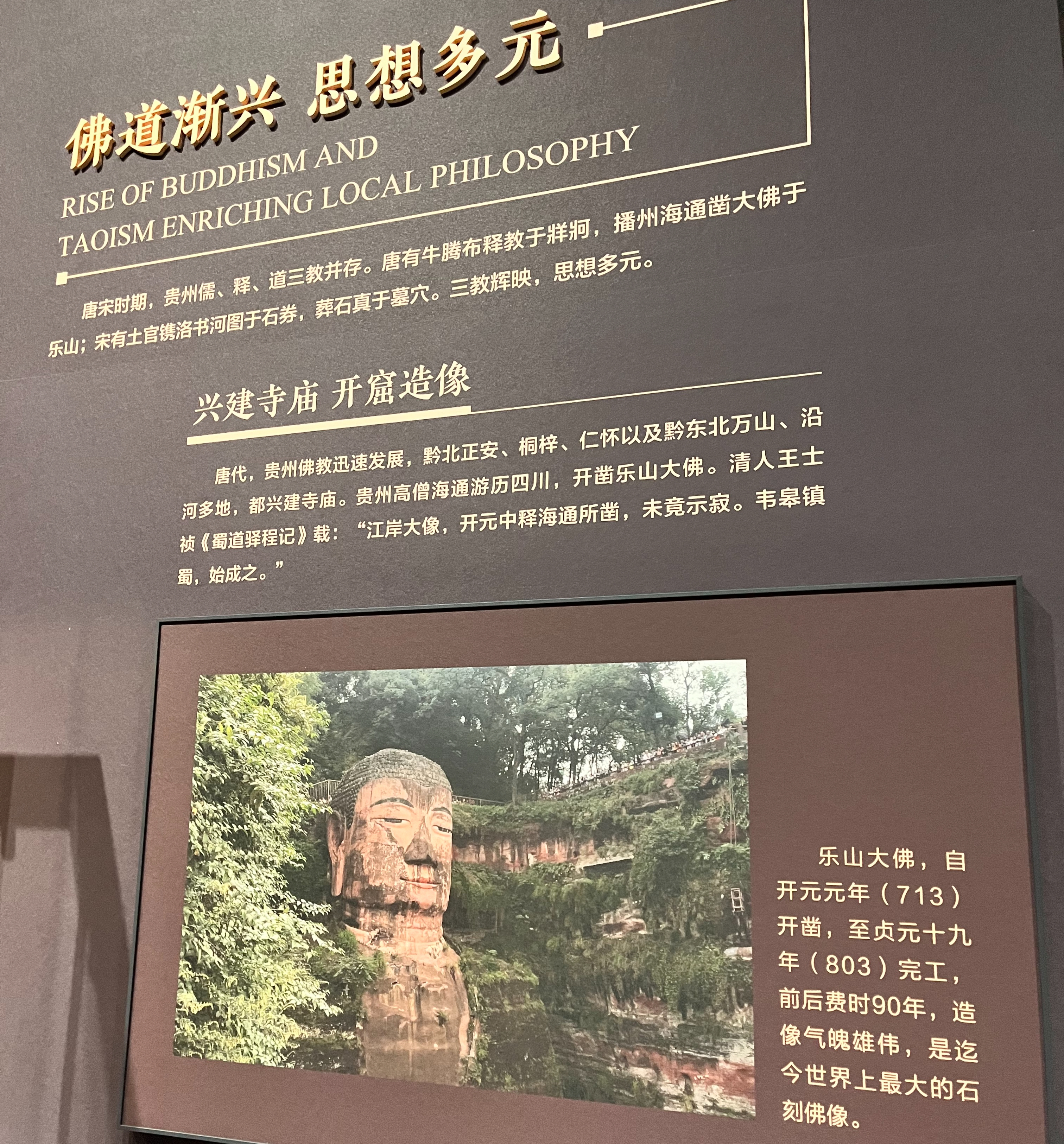
After touring the museum, our time in Guiyang concluded.
🚄 Our train from Guiyang East Station to Shenzhen North Station left at 11 PM. The average temperature in Guizhou during these days was around 20°C, while it was about 30°C in Shenzhen, which felt quite hot.
Due to the Dragon Boat Festival travel peak, we couldn’t get a ride-share. At the station exit, there were rows of waiting taxis, seemingly waiting for us. Back to work for many, but not for me; I’m now retired from work and took my time writing this travel diary.
Conclusion
Guizhou offers beautiful mountains and rivers with comfortable temperatures. It’s a lovely place, often described as having clear waters and green mountains. However, the attractions are spread across different districts, and the distances between them can be a bit far, though transportation is generally convenient.
Guizhou is also a province that appreciates gratitude, with many free admission policies that are very appealing. Our trip cost around 2100 RMB per person, and we saved a lot on admission fees. I plan to keep an eye on cultural tourism in various provinces to visit places with free entry in the future.
Perhaps we’ll meet again in Tongren, Guizhou, before July.
